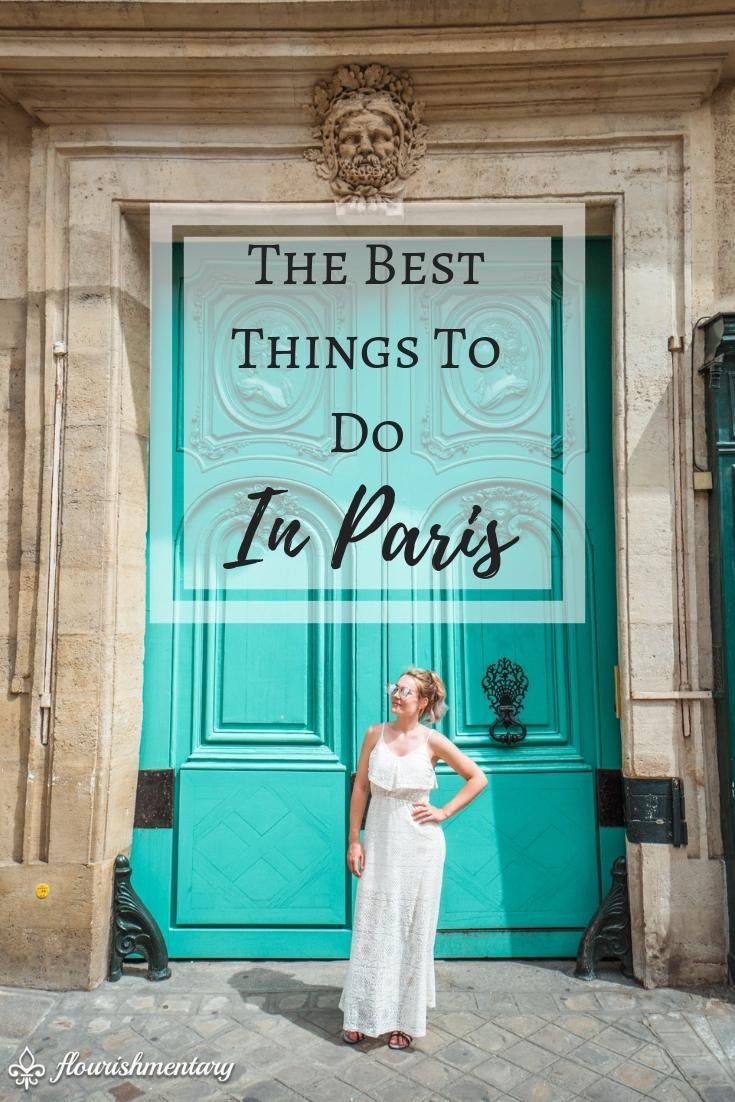
Paris is the city of light, the city of love, and of course the city of long lines for tourist attractions. While there are so many beautiful things to see, how do you fit it all in? My Best Things To Do In Paris guide will show you how to make the most out of your trip, by keeping you out of the long queues!
I’m no Paris rookie, but since my last visit was five years ago, I knew we needed a game plan. I created this guide to leisurely visit many of the beautiful places Paris has to offer, during our 4 day trip. This guide covers popular attractions and lesser known local favorites, for a relaxing trip to the french capital.
Enjoy the guide, and don’t miss my 5 quick tips for visiting Paris located at the end of the post! Bon voyage!
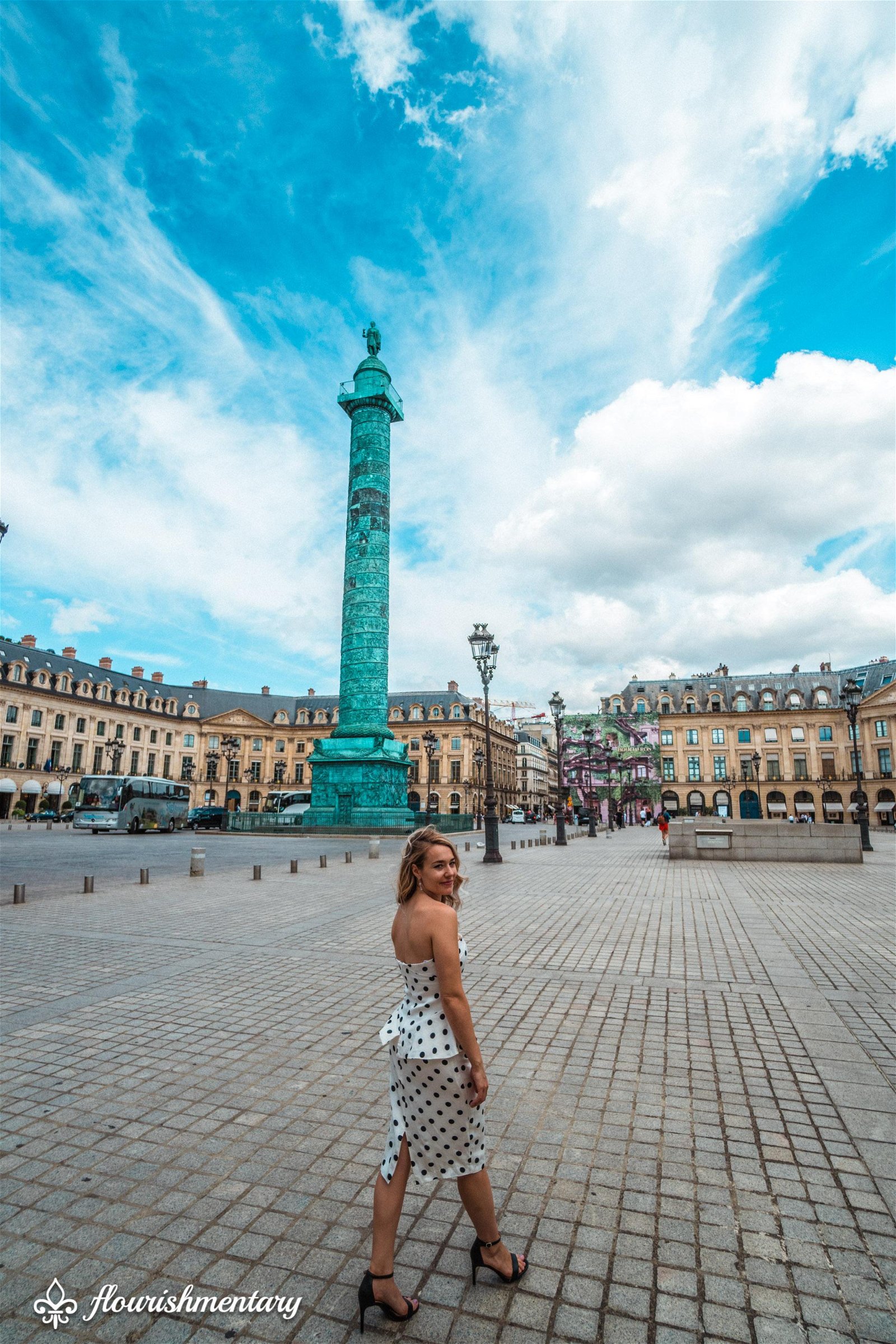
Day 1:
Canal Saint Martin
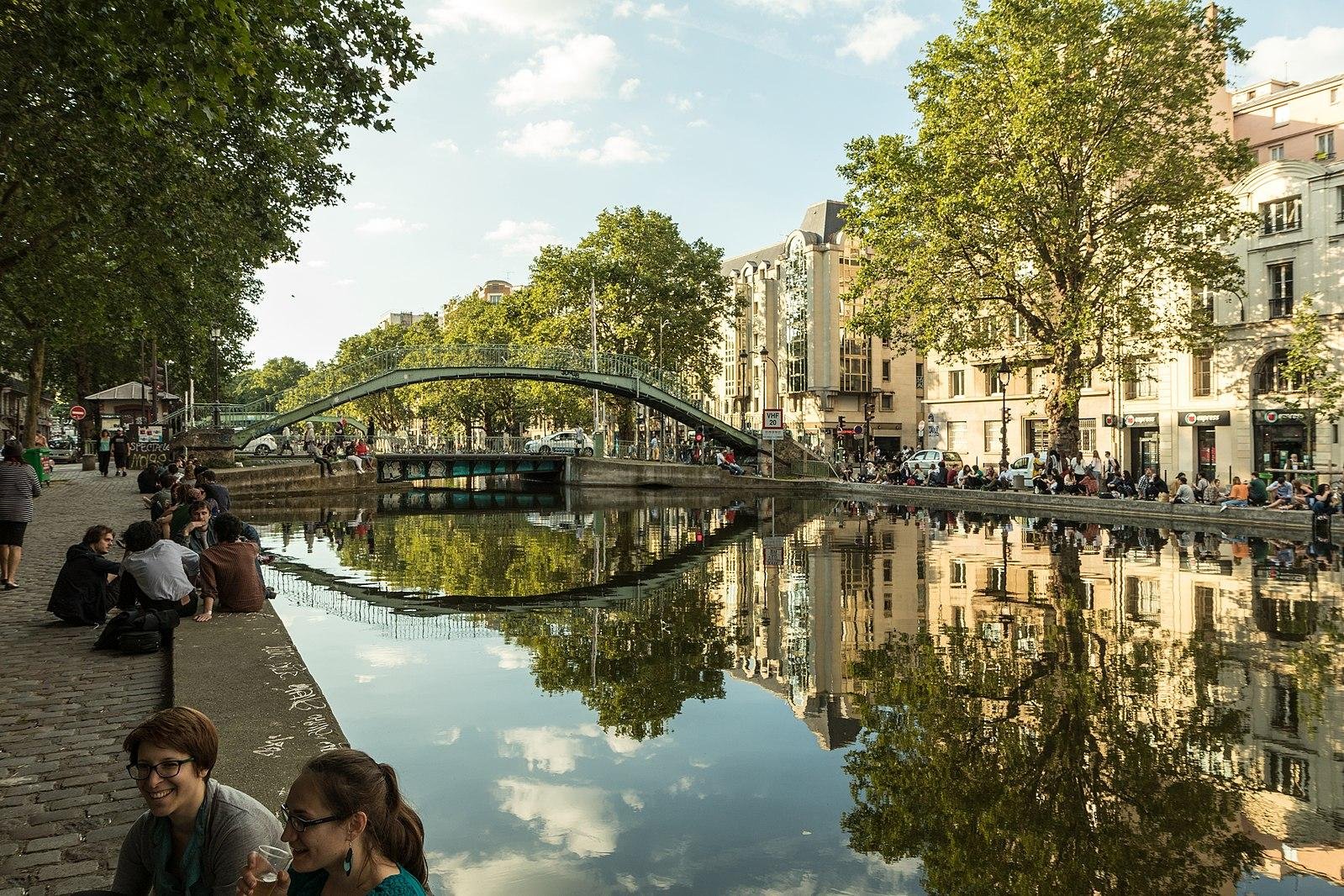
We arrived in Paris in the early afternoon, and after dropping off our luggage, we began our day with a visit to the picturesque Canal Saint-Martin neighborhood.
The canals were constructed by Napoléon way back in 1802, helping to supply the area with fresh water from the Northern Canal de l’Ourq. Nowadays during the spring and summer months, locals hang out along the banks, strumming guitars, drinking with friends, or enjoying a bite to eat in one of the many quaint cafes.
This picturesque area is full of adorable boutiques to browse, and on Sundays they even close off the parallel streets to motorists (Quai de Valmy and Quai de Jemmapes). We wandered around, stopping to observe a boat going through the locks system of the small canals. A popular attraction in the area is a canal river cruise, where you can explore this historic stretch of waterways from beginning to end.
Pigalle & Show At The Moulin Rouge

Pigalle is one of Paris’s most interesting quarters, and it’s shining star has long been the famous cabaret: The Moulin Rouge.
I had always wanted to attend a performance (and yes, my obsession with the film may have been a factor), but was finally able to make it happen this trip!
The Moulin Rouge offers dinner performances, but we decided to grab dinner in at the nearby Restaurant Clairiere before heading to the show. Dinner was fantastic, with amazing wine, french seasonal vegetables, and the most amazing duc l’orange I’ve ever had.
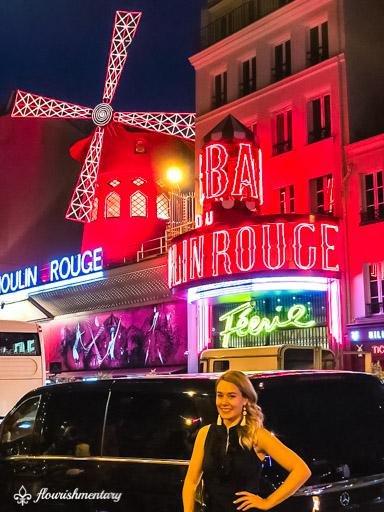
Back when the Moulin Rogue opened in 1889, the owners chose the iconic red windmill, as a nod to the formal rural hills of Monmartre. This exotic new look, combined with the provocative French Cancan dancing put the Moulin Rouge on the map for life.
The theatre was so magical, with red glowing lights, and french turn of the century styling. The performance itself revisited each decade of history passed, adding an exotic twist. Between performances from the Moulin Rogue dancers, we saw entertaining sets from contortionists, acrobats, and even roller skaters. It was such a fun way to spend and evening in Paris, and a big check off my bucket list!
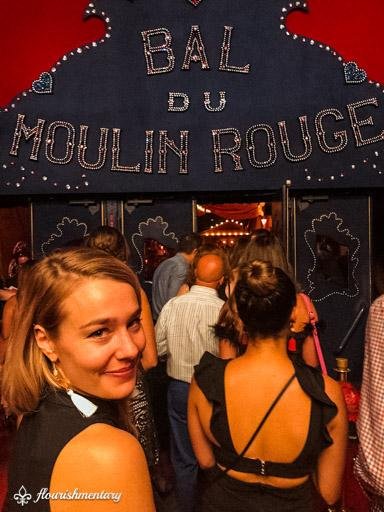
Day 2:
The Chateau Of Monte Cristo
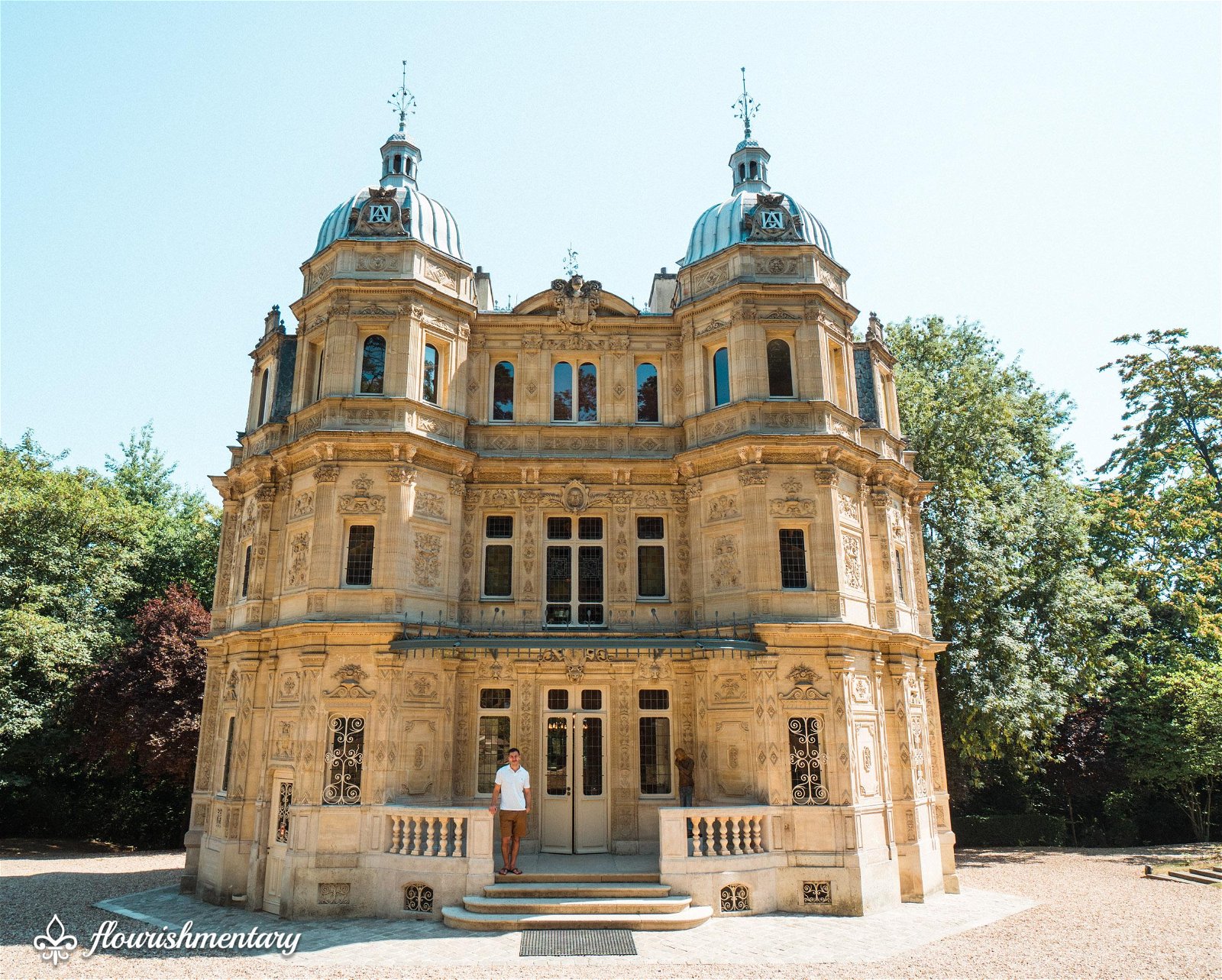
We started our second day just outside the city in Saint-Germain-en-Laye. Easily reachable by the RER lines, this area suburb of Paris is home to the Chateau of Monte Cristo. Once reaching the station at San Germain en Laye, it’s a short ride on the number 10 bus to the Chateau property.
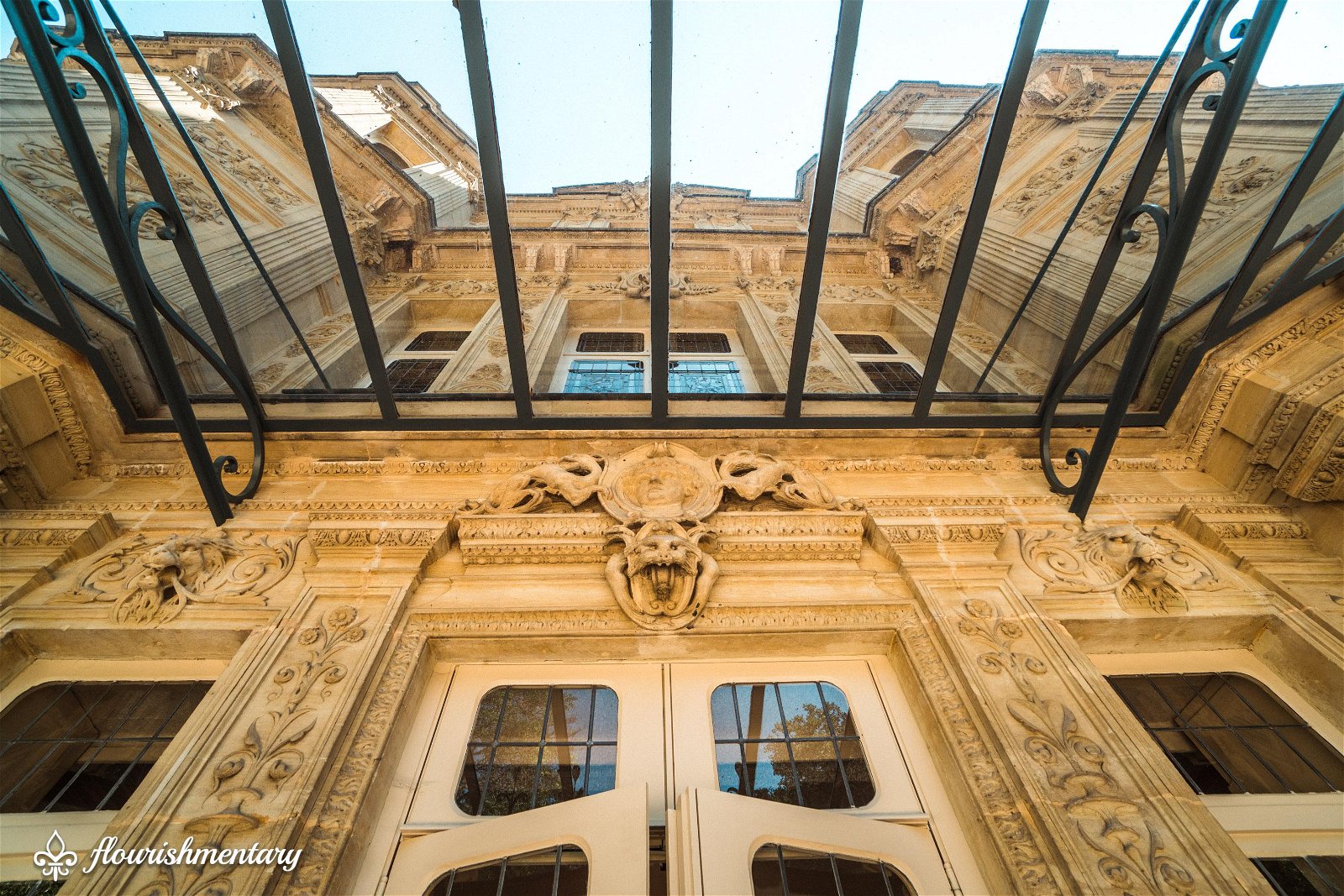
This historic home was built in 1846 by the famous french author Alexandre Dumas, and named after his renowned novel The Count of Monte Cristo. We visited for my husbands love of his work, and my admiration for the estates unique architecture. Much to our delight, we arrived the hour just before they closed for lunch, and magically had the entire place to ourselves.
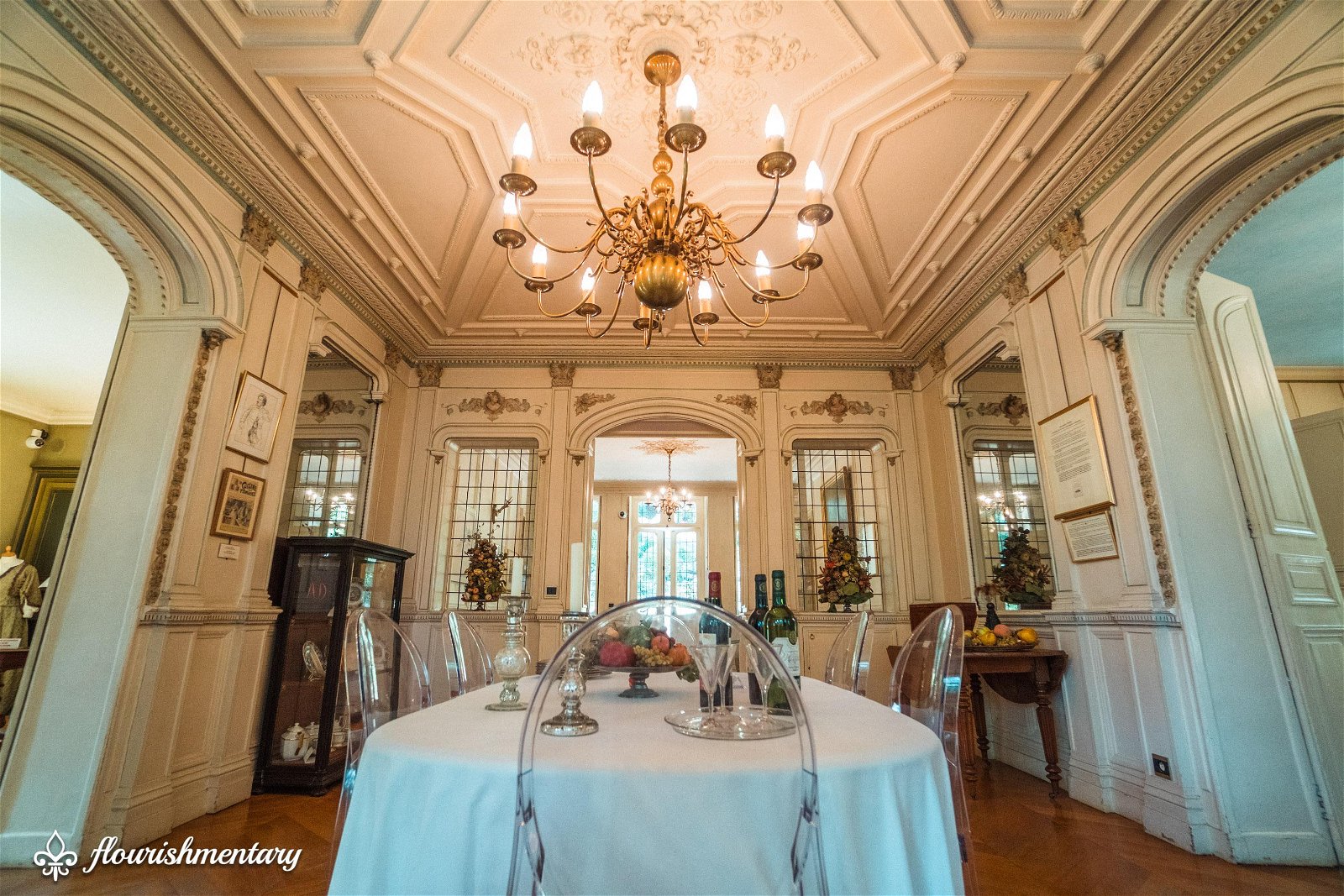

The Renaissance style chateau has an interesting facade featuring amazing sculpture, and the faces of Dumas’s personal hero’s like Shakespeare. The most elaborate room of the home was the “Moorish room”, inspired by the authors trips to Tunisa. This room was immaculately restored thanks to King Hassan II of Morocco, and reflects the authors love for celebration and conversation.
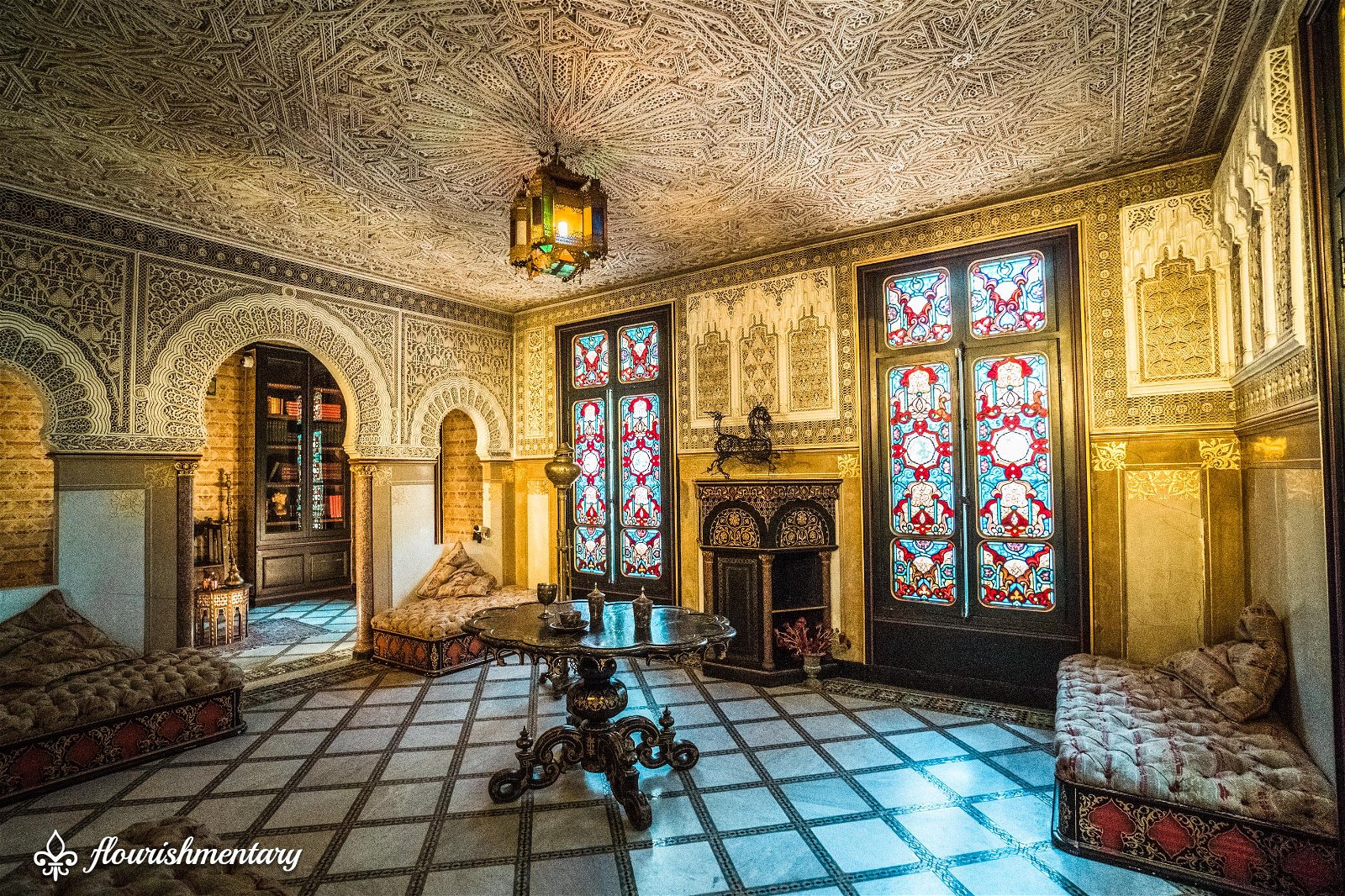
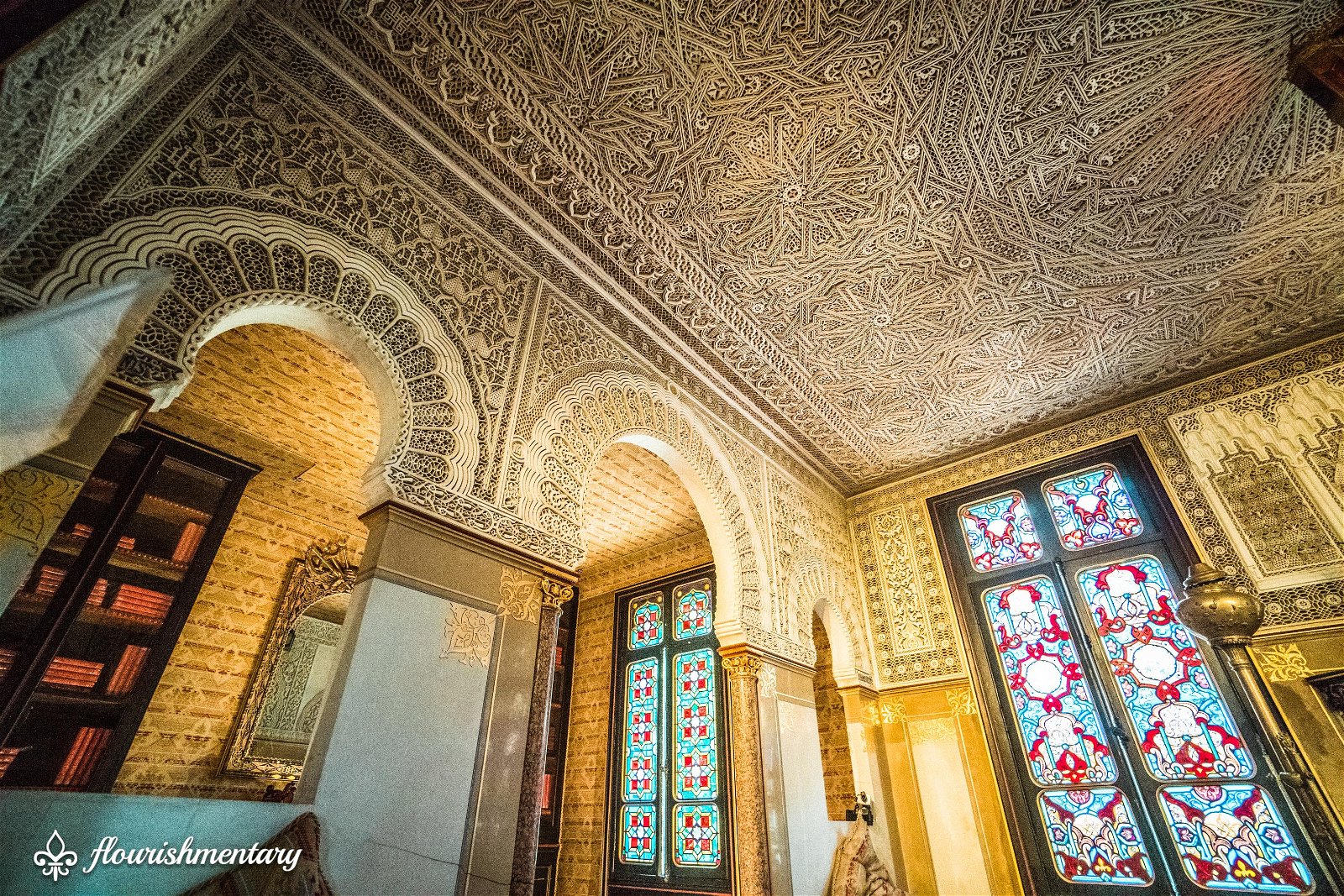
The chateau also features another impressive structure, a miniature castle that housed Alexandre’s private office. The building called the “Château d’If”, was named after the island fortress prison in the same novel. The structure is complete with it’s own tiny moat, and the facade displays small plaques with the names of his best novels.
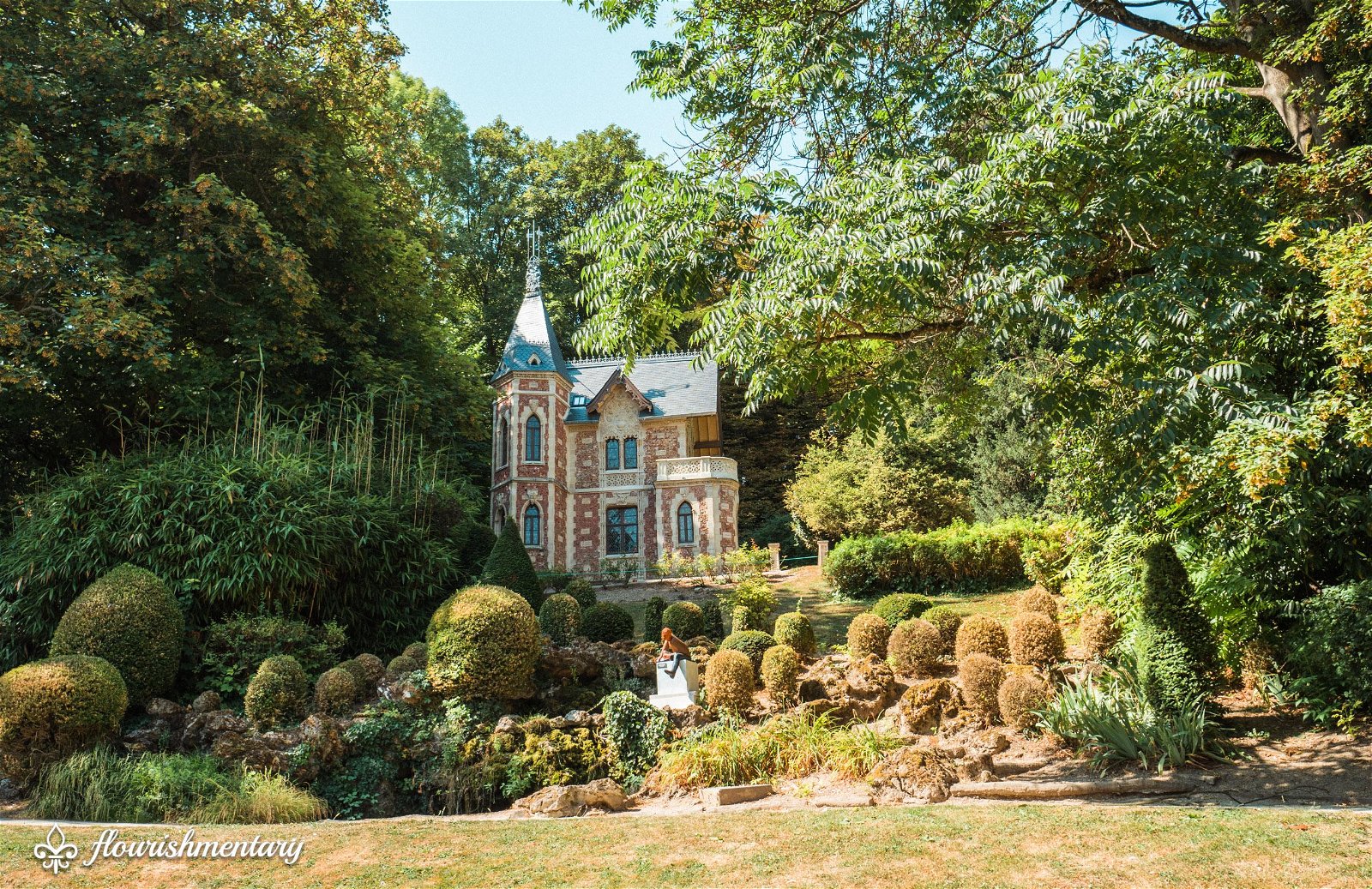
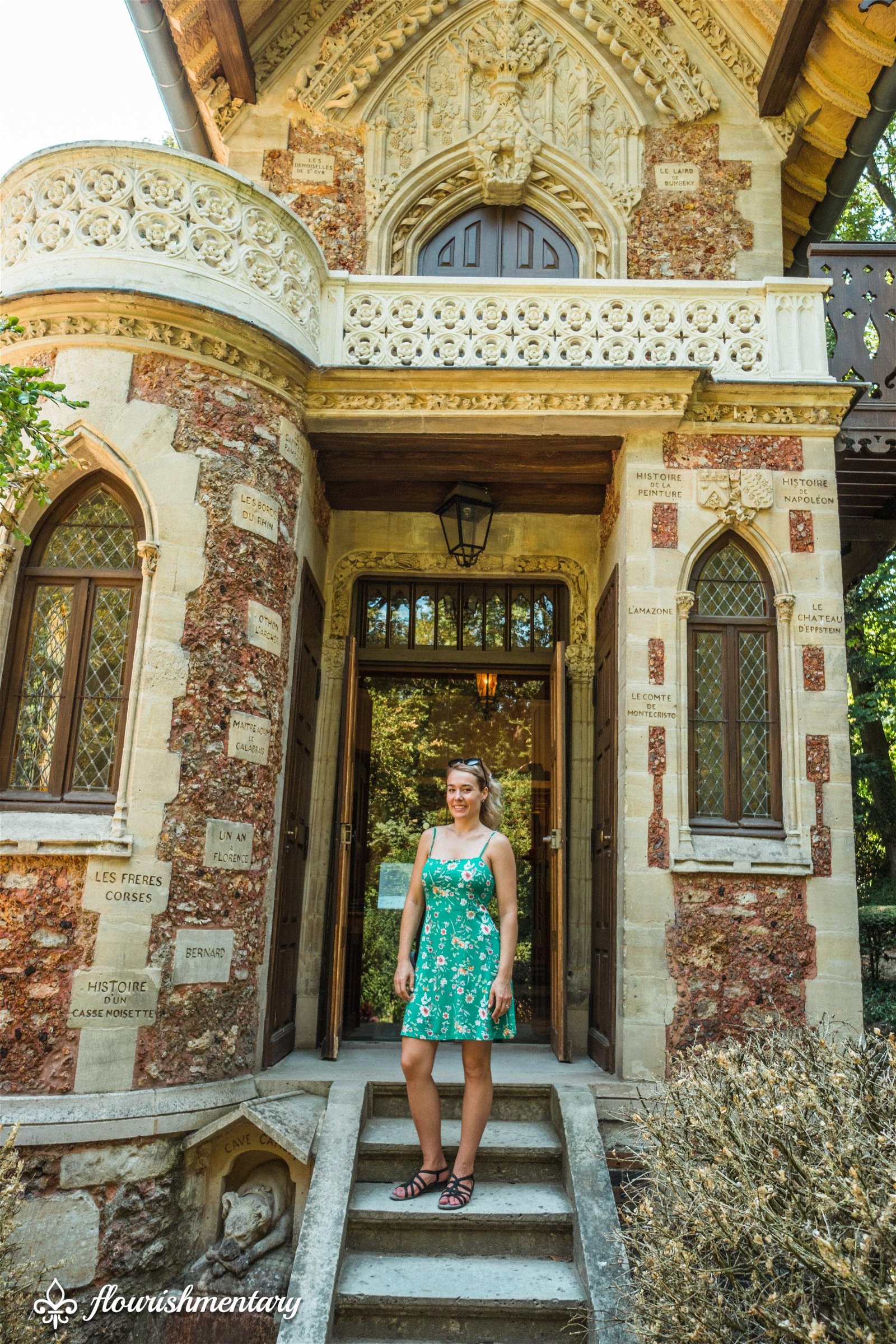
Saint-Germain-en-Laye
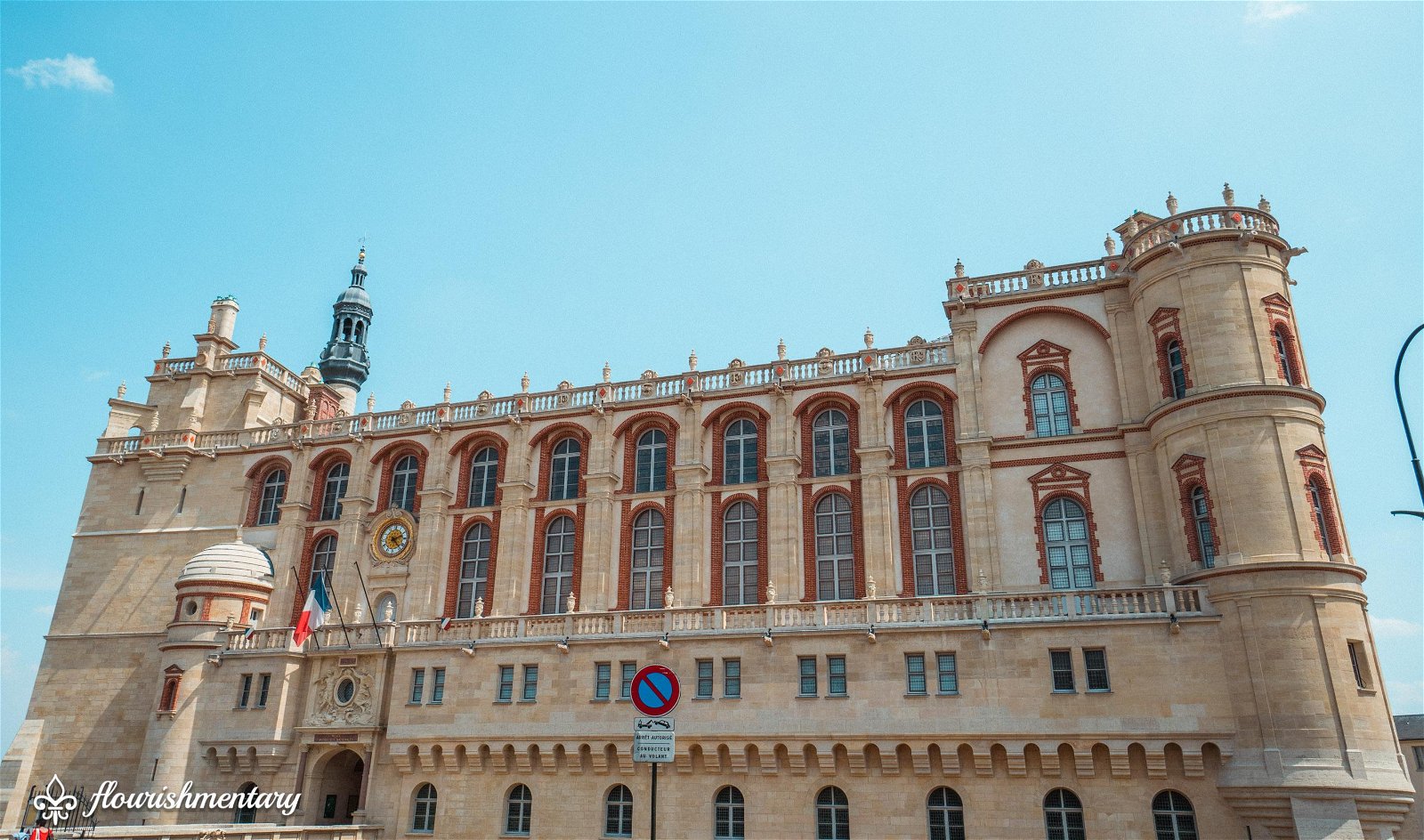
After touring the chateau, we took the bus back into the city center for lunch. Paris was in the middle of a heat wave, but we found a lovely spot to eat outdoors at La Cantine De Marius. We had a leisurely afternoon, enjoying classic french roasted chicken in a beautiful setting of the town square.
The restaurant is just across from the Château de Saint-Germain-en-Laye a medieval castle that now houses the National Archaeology Museum. The castle is an impressive display of Gothic architecture, and also features an expansive formal garden and park open to the public. If we’d had more time, we definitely would have made it inside the museum!
We wandered around the city center, drinking in the sites and sounds of the small village. The town square is full of impressive architecture, and was the perfect way to walk off our substantial lunch before heading back into the center of Paris.
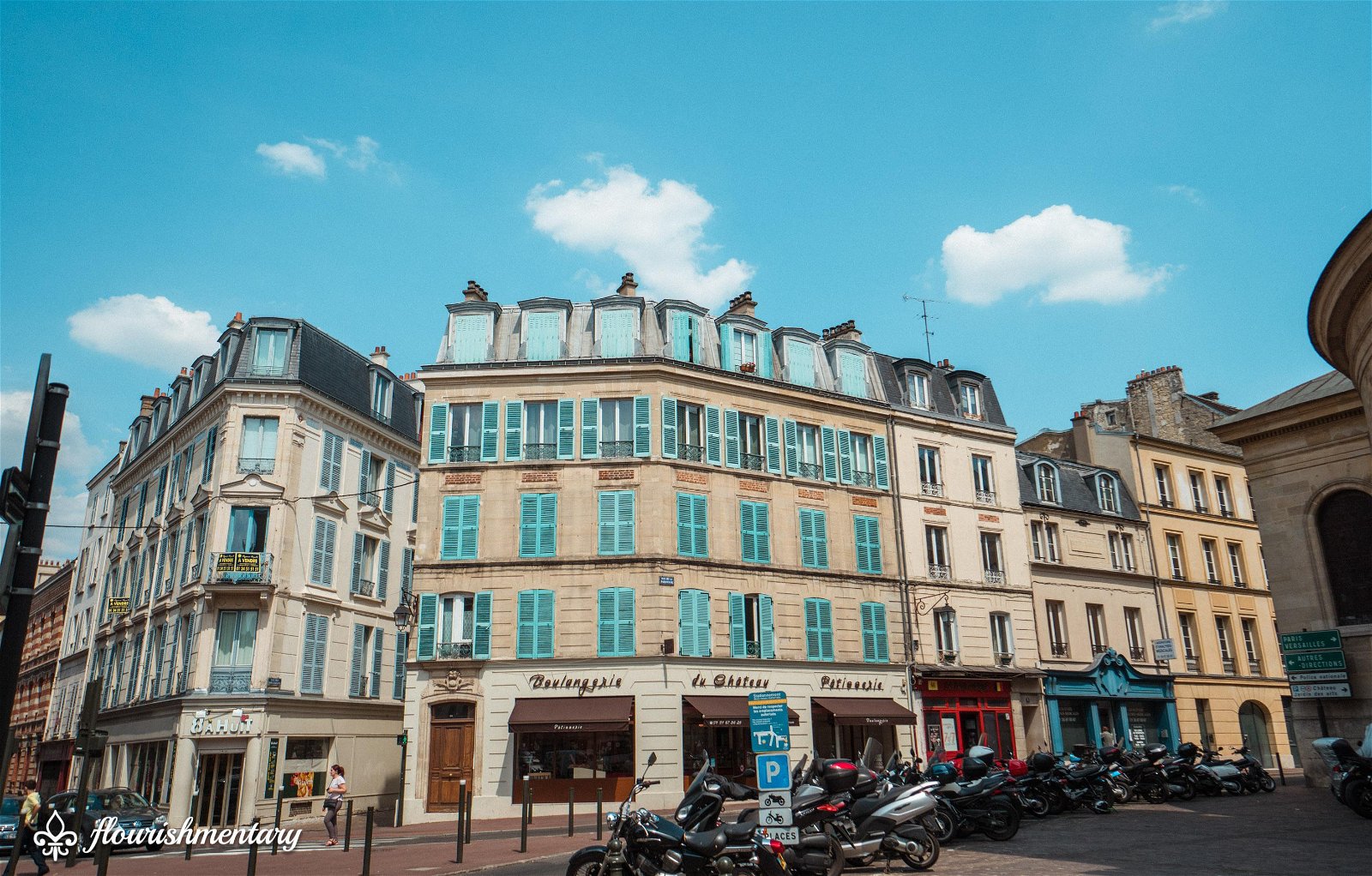
The Galeries of Paris
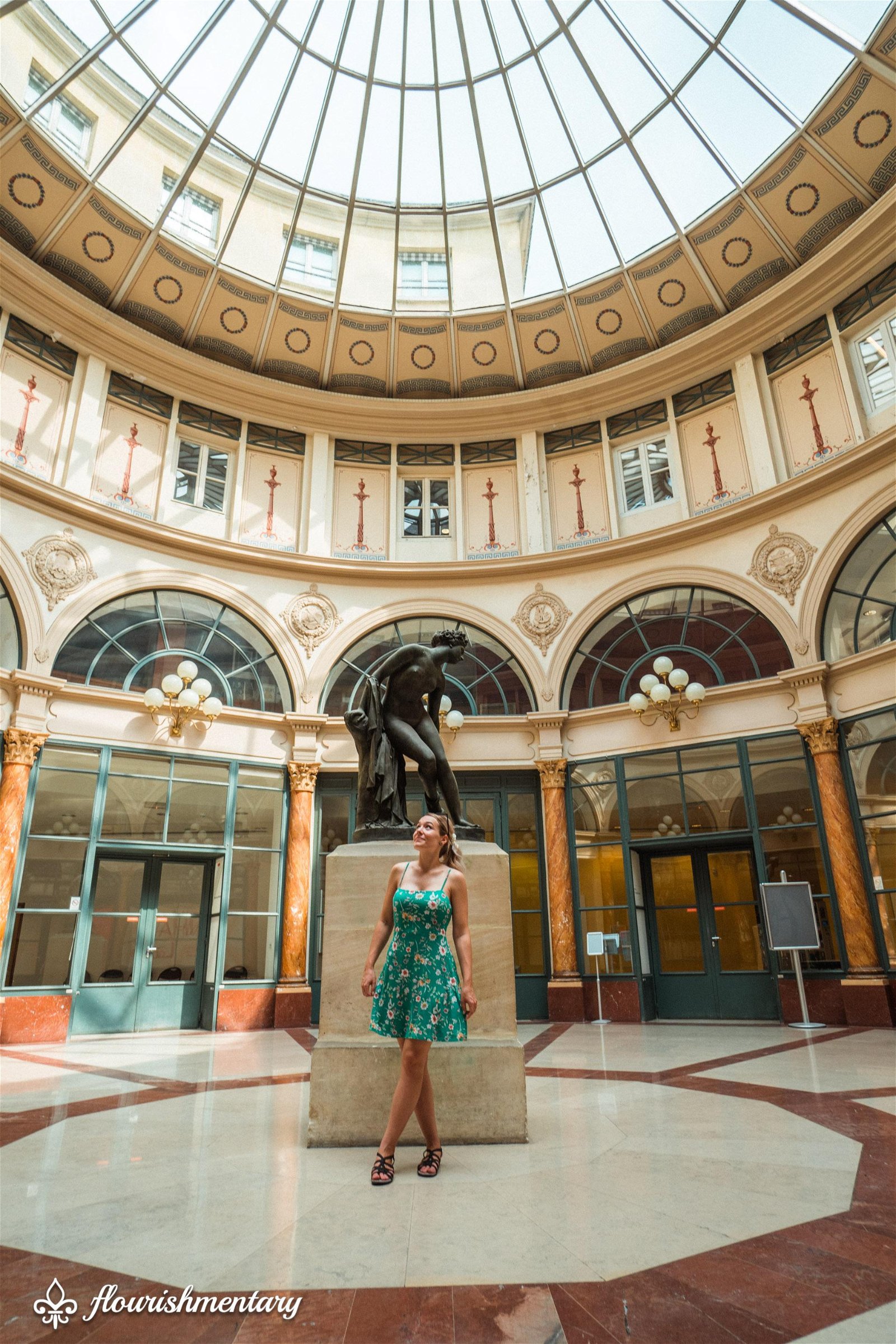
One of the coolest things about Paris is it’s history of world class shopping, and the grand galeries of Paris still house the finest french shops today. These covered architectural wonders grew in popularity in the 1800’s, because they provided much needed reprieve from the dirty city streets, and allowed Parisians to shop and dine while staying dry and warm.
At the height of their popularity there were more than 150 of these passage galleries, but only 18 remain today. I was thrilled to be seeing a few of these impressive arcades, because stepping inside truly feels like taking a step back in time.
Galerie Vivienne
We started at the amazing Galerie Vivienne, which has some of the most enchanting tiled floors in the whole of Paris. This gallery was built 1823, and the store fronts of the shops remain largely unchanged since then.
It was remarkable to see the level of craftsmanship throughout the space, particularly it’s large scale shop doors, and impressive glass ceiling. Some of the most prestigious shops in Parisian history from art galleries to children boutiques are still happily housed in this historic space.

Gallerie Colbert
The nearby Galerie Colbert wasn’t originally on our visit list, but we luckily wandered inside after leaving the Gallerie Vivienne just next door.
This building is an Art Nouveau wander, and now houses the Institut Nationale d’Histoire de l’Art (INHA) and the Institut National du Patrimoine (INP). The center courtyard features a stunning glass domed ceiling, and the Brasserie Le Grand Colbert has been featured in several films including Something’s Gotta Give.
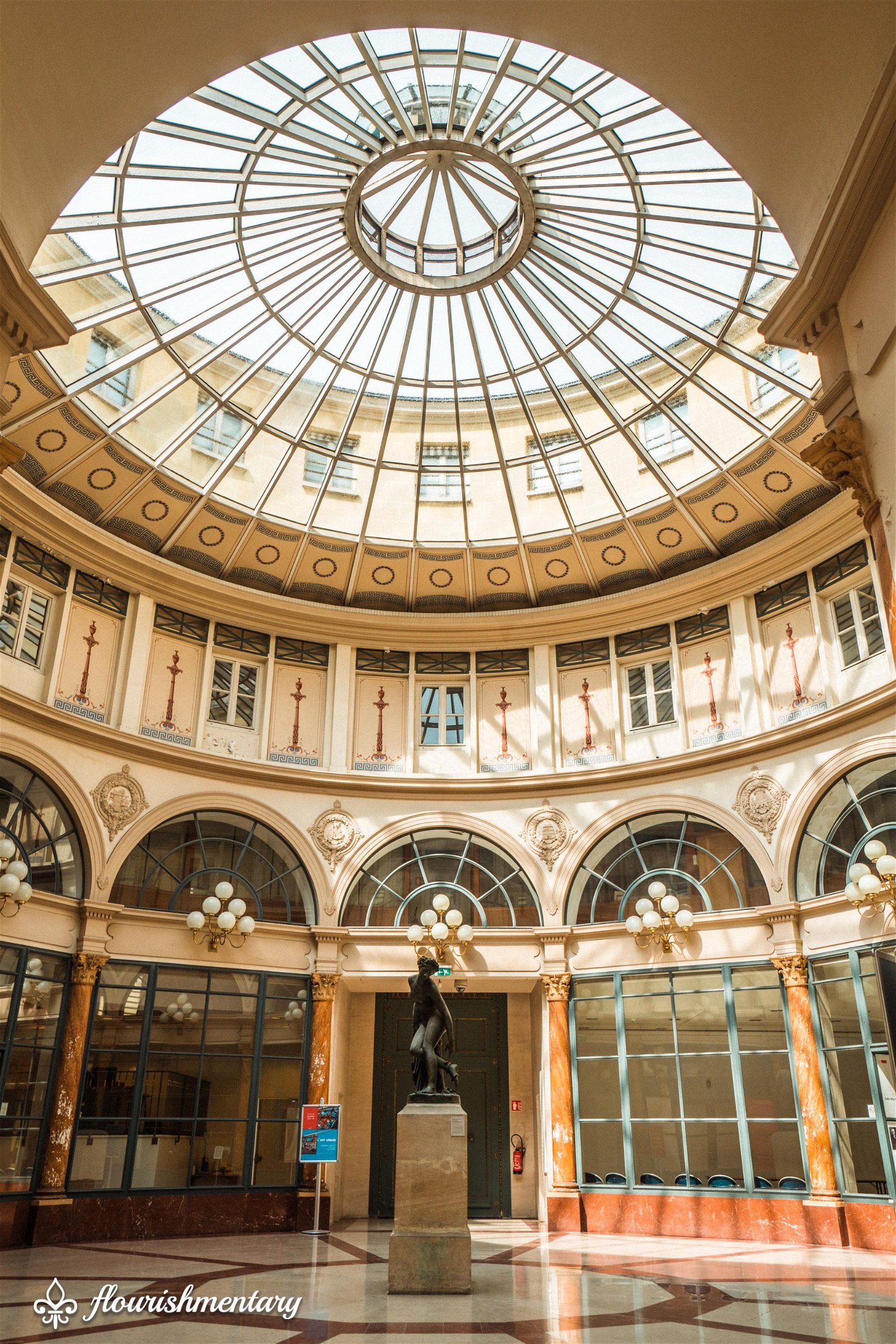
Galerie Véro-Dodat
Perhaps the most well know of all the remaining Galeries is the 1826 Neoclassical retail arcade: The Galerie Véro-Dodat.
Complete with romantic checkered floors, glorious frescos, and gilded decorations, this Galerie houses some of most high caliber design shops and antique stores in the world. In fact, it is still home to the flagship Paris Christian Louboutin store, and each shop has it’s own unique vintage patina.
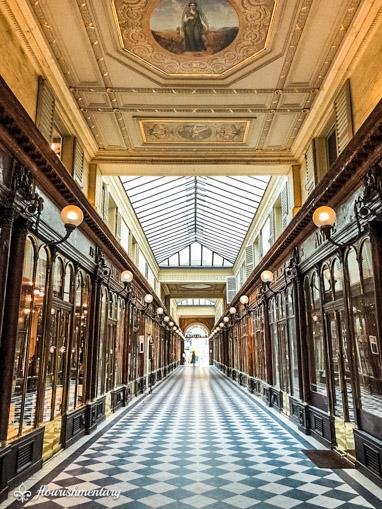
The Palais Royal
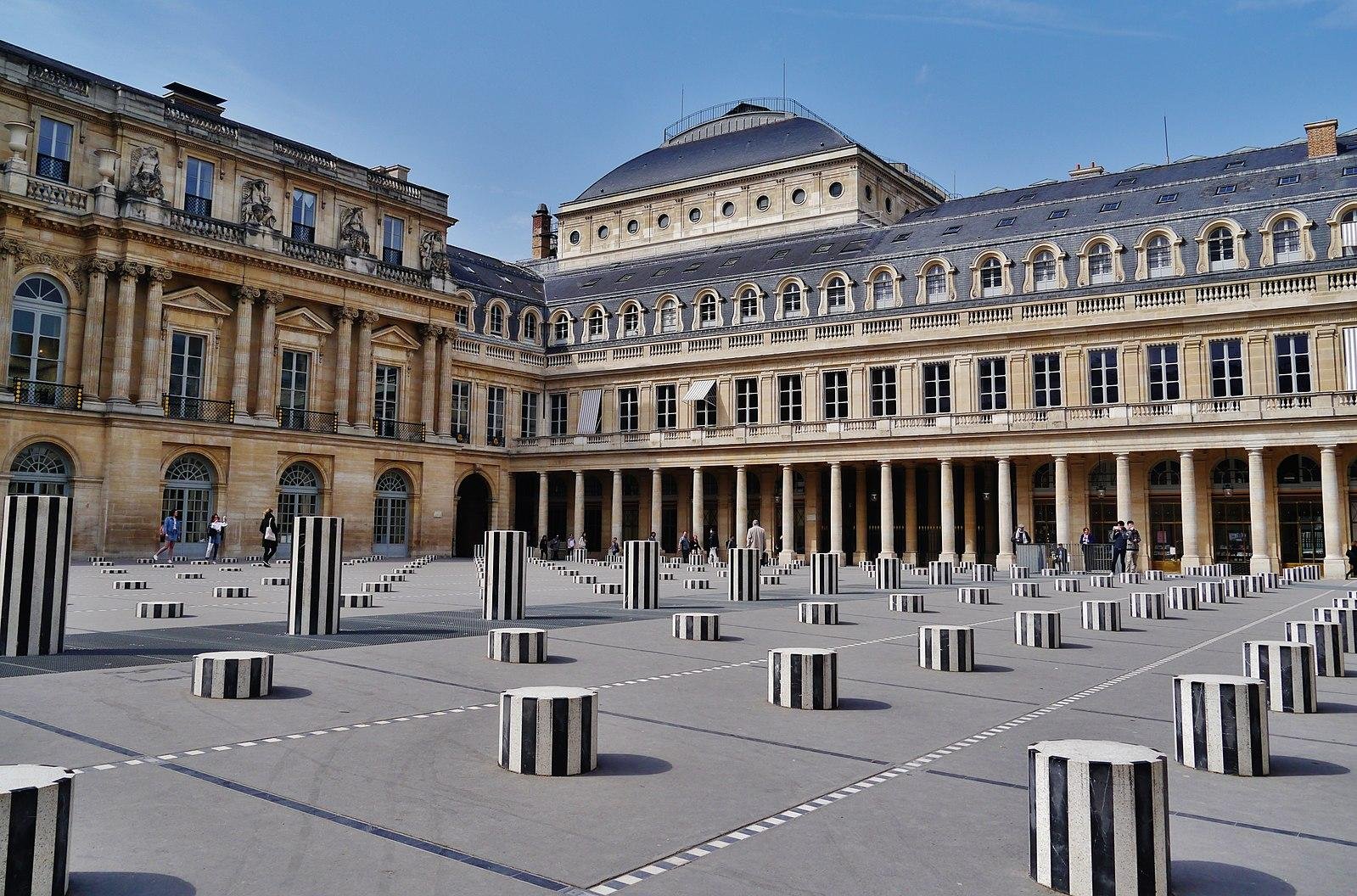
Following our grand galerie tour, we made our way to the nearby Palais Royal.
This former royal residence is just opposite the Louvre, and features a large inner courtyard with a fantastic art installation called Les Deux Plateaux. Also known as Les Colonnes de Buren, these candy striped pillars make for a chic photo op as you pass through.
We also visited the adjacent Cour d’Honneur and the popular Palais-Royal Gardens, which is a stunning oasis in the heart of Paris. The garden features impressive fountains, flowers, and over 500 trees. The double lined row of lime trees make this garden a popular hangout spot for an afternoon picnic, and is a great place to take a rest and people watch.
The Cathedral Notre Dame & The Siene River
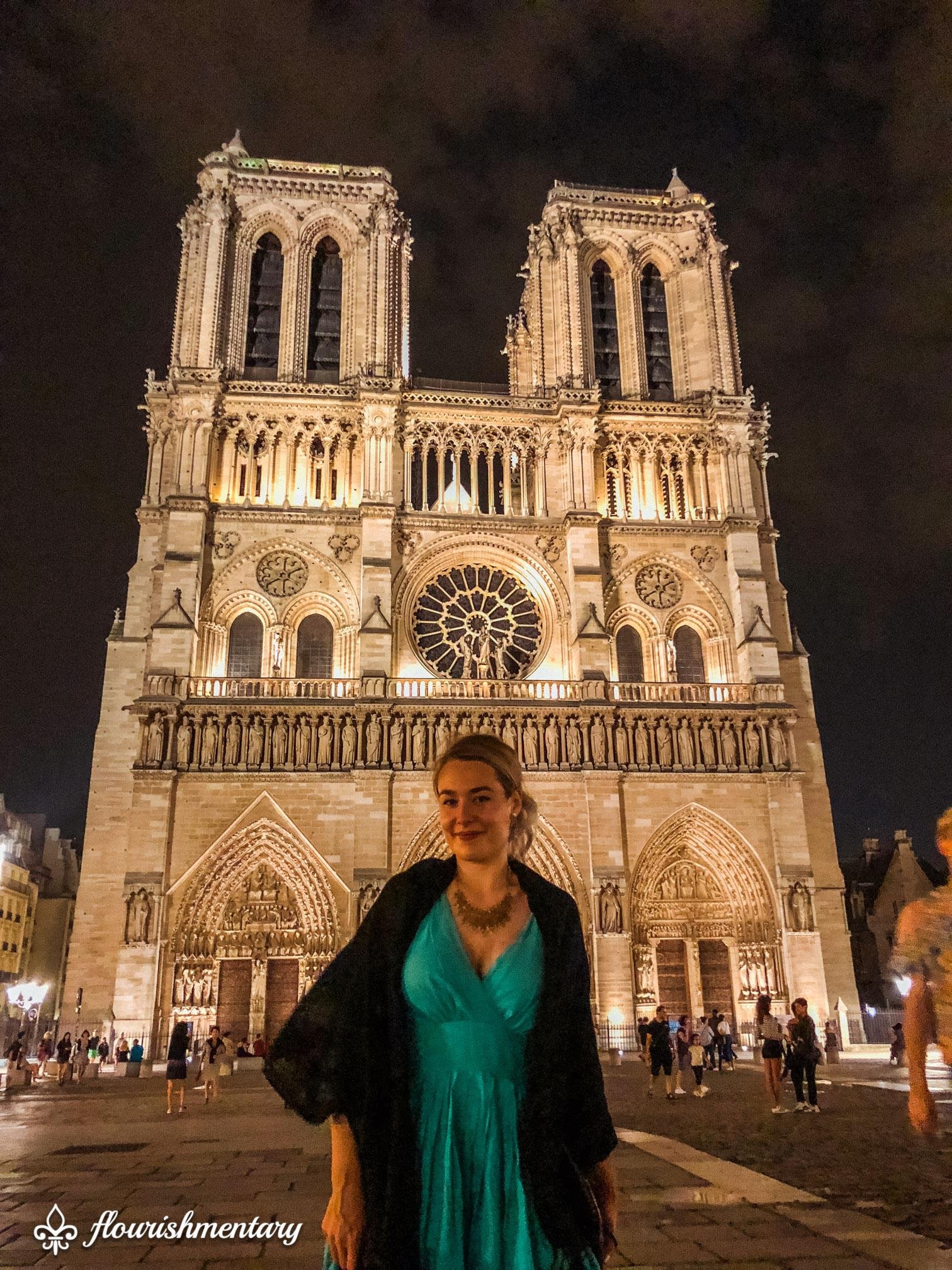
After having dinner in a nearby restaurant, we did a nighttime visit to the Cathedral Notre Dame of Paris. Meaning “Our Lady of Paris” in french, this world famous church began construction in 1160, and after many iterations and restorations, is still considered one of the finest examples of French Gothic architecture in existence.

One of the coolest things I learned during our visit (thanks to my friend Flore) is that just outside the cathedral is the “Paris Point Zero”. It marks the exact center of the city, and all other locations are thought to be measured from this point. It’s marked by an octagonal brass plate which can be tricky to spot, especially at night. Visitors can take part in superstitious customs such as spinning in a circle on one foot to gain your heart’s desire, kissing a loved one to ensure a eternal devotion, or filling it with coins as a sort of wishing well.
Afterward, we walked across the Notre Dame Bridge and along the Siene river to take in the sites. Amazing views can be seen of the Conciergerie, and as you continue along to the Point Neuf Bridge, you can catch glimpses of the Tour Eiffel lit up at night. During the summer, pop up beaches can be found along the river complete with sand and activities. We stopped to watch a band perform an evening serenade to party goers, spending their summer evening along the banks of the Siene.
Day 3:
Palais Garnier
Because we would be meeting friends outside the city that evening, we scheduled a full day of fun places to visit. Our first stop was right off the metro line, at the Palais Garnier.
The Palais Garnier is the world famous opera house in Paris, and was the setting for the famous novel Phantom of the Opera. You can pay to visit the interiors without seeing a performance, but the gorgeous exterior is well worth a stop and stare. The building includes elements from of Baroque, Palladio, and Renaissance architectures styles, and blends them together perfectly in one amazing facade.
A Cinema First

A little known spot along the Boulevard des Capucines reveals a historic plaque, notating a big moment in cinema history. The inscription reads:
“Here December 28th, 1895 took place the first public screenings of animated photography with the cinematograph, machine invented by the Lumière brothers.”
In present day this building is home to the Scribe Hotel, but in the 19th century it was called Le Grand Café. Inside the basement theatre, brothers Auguste and Louis Lumière held the first public projections of their invention : the cinematograph. They showed 10 different short films, and left audiences stunned by this new technology. If you’re a cinema lover like we are, you’ll really get a kick out of it!
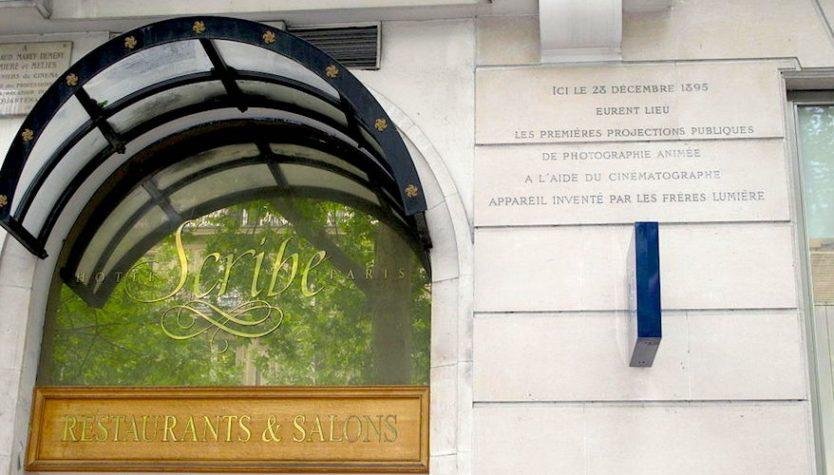
The Place Vendôme & The Ritz Paris
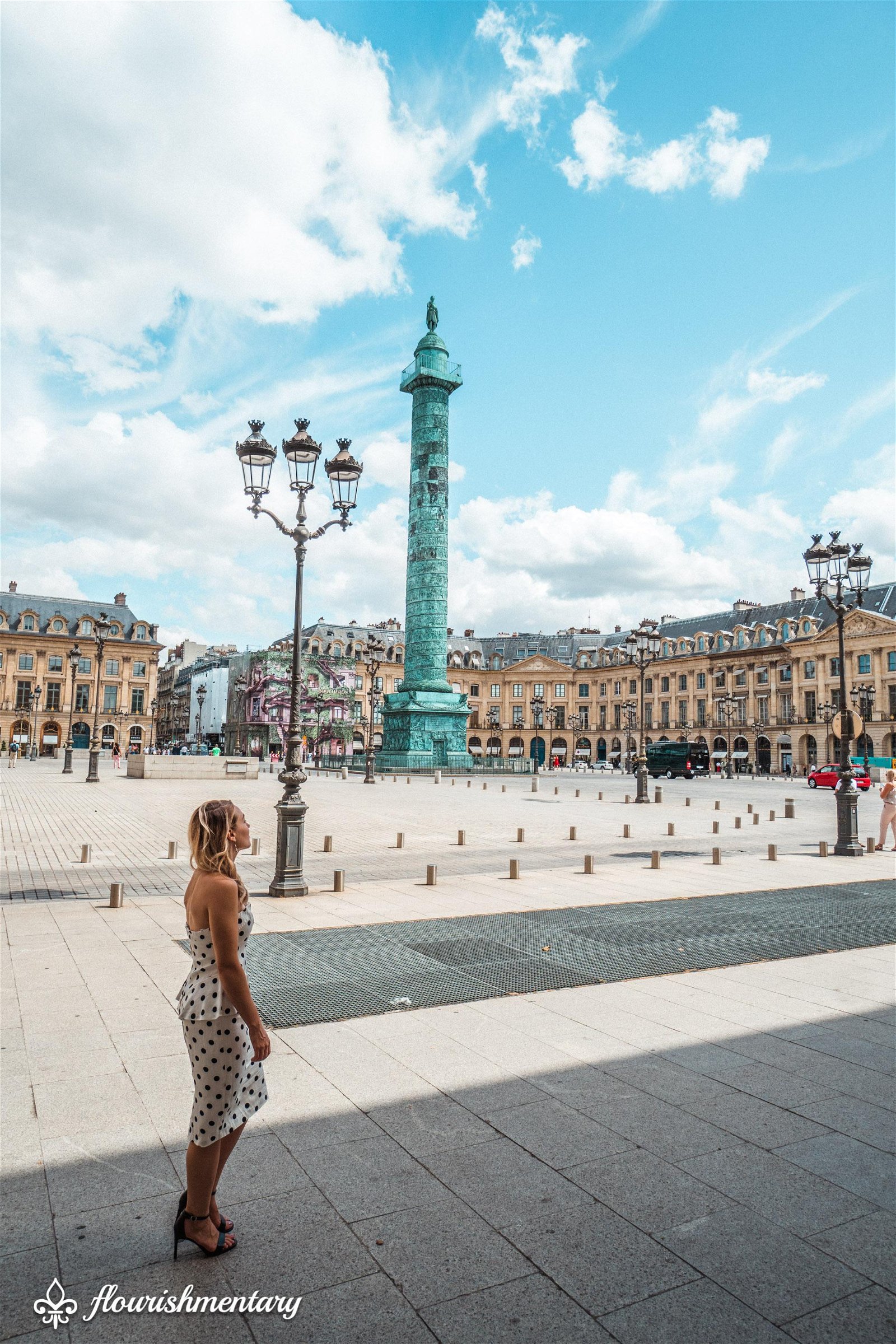
The historic Place Vendôme was the former home of César de Bourbon, Duke of Vendôme. The Place Vendôme as it exists today was laid out in 1702, and now features a stunning obelisk called the Vendôme column, giving the area a distinct look. The place is now home to some of the most famous jewelry shops like Cartier, Chanel, and Rolex.

The Place Vendôme is also home to one of the most famous hotels in the world: The Ritz Paris. Fresh from a multi million dollar renovation, the Ritz Paris is ranked among the most luxurious hotels in the world. It maintains the façade of an 18th-century town house, and several of its suites are named in honour of famous guests of the hotel, including Coco Chanel and Ernest Hemingway. The hotel is so grand that one of it’s suites (the Suite Impériale) has been listed by the French government as a national monument.
While the hotel isnt exactly camera friendly, it was a joy to visit the grand lobbies, restaurants, and of course, it’s very own shopping galerie. The Ritz is sure to stay on my bucket list until I book a stay one day!
The Jardin des Tuileries
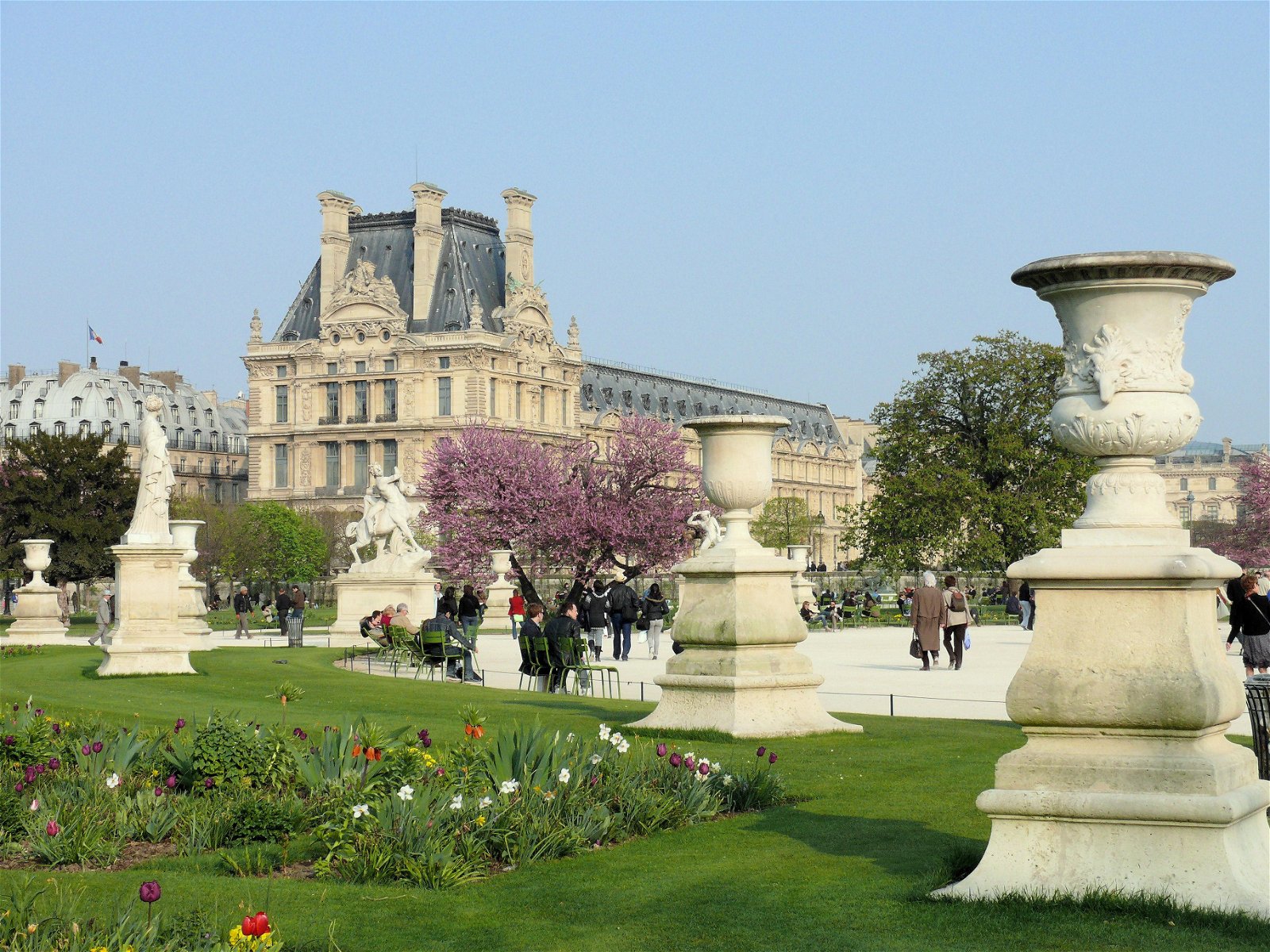
A short walk from the Place Vendôme is are the extraordinary Tuileries Gardens.
The Tuileries Gardens were created by Catherine de’ Medici as the garden of the Tuileries Palace in 1564, and became a public park after the French Revolution. On the weekends today, it’s filled with food vendors, rides, and games for Parisians to get some R&R.
The Place de la Concorde
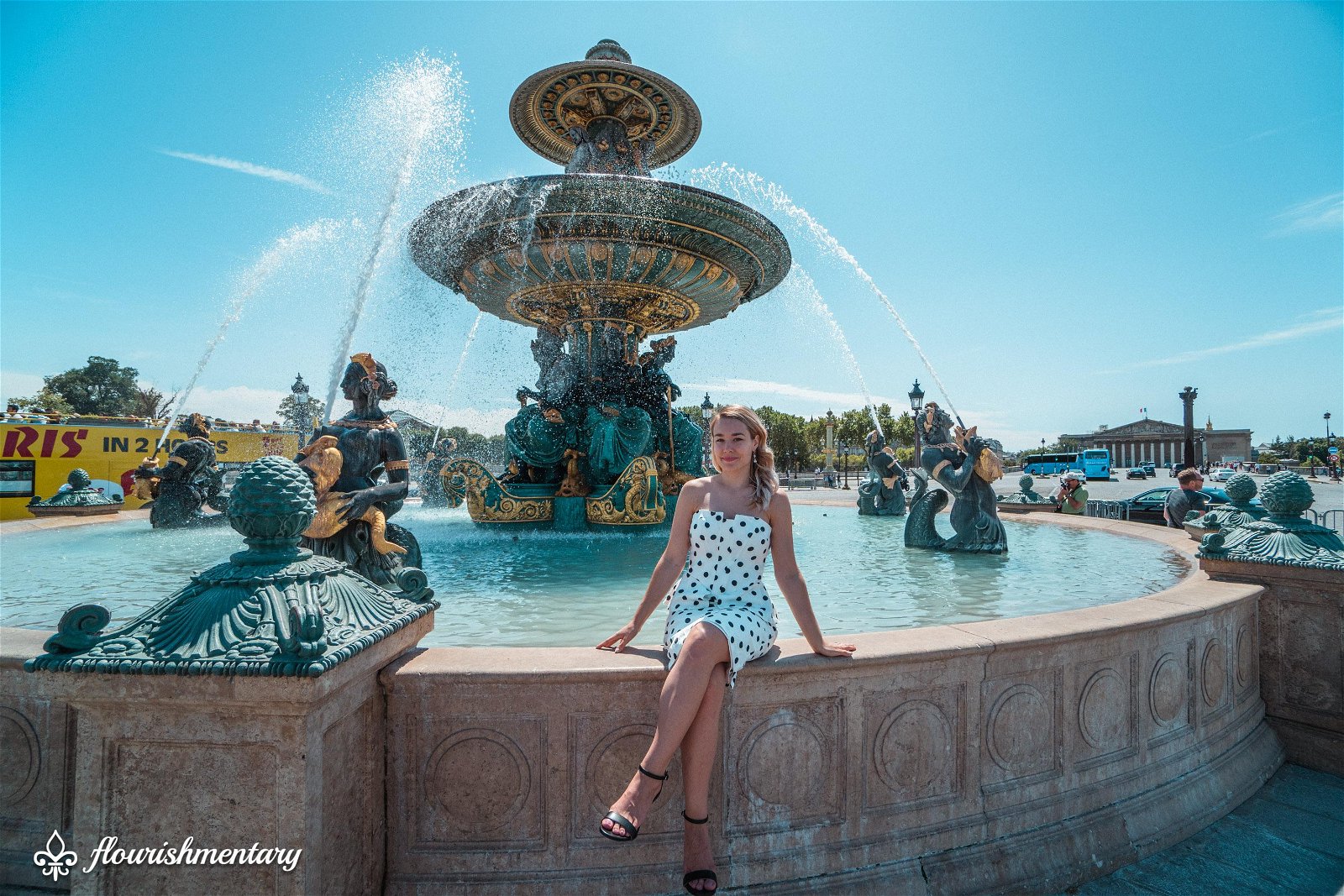
Next we made our way to the Place de la Concorde, situated at the end of the Champs-Elysées. Created in 1772, the place was famous for it’s use as the execution site during the French Revolution (sry Marie Antionette). Today the Place de la Concorde is famous for the Egyptian Luxor Obelisk and two breathtaking fountains (Fontaine des Mers and Fontaine des Fleuves).
Built in 1840, these fountains were heavily influenced by the Piazza Navona in Rome, and are some of the most beautiful in the world. Visiting the Place de la Concorde has always been one of my favorite things to do in Paris, because of these magical fountains. The major figures of the fountains represent the spirit of Maritime and the Rivers, and were made of cast iron and adorned with gold and bronze paint. It took the work of 12 different sculptors over a period of years, but end result are remarkable art works that light up the plaza to this day!
The Grand Palais & The Petit Palais
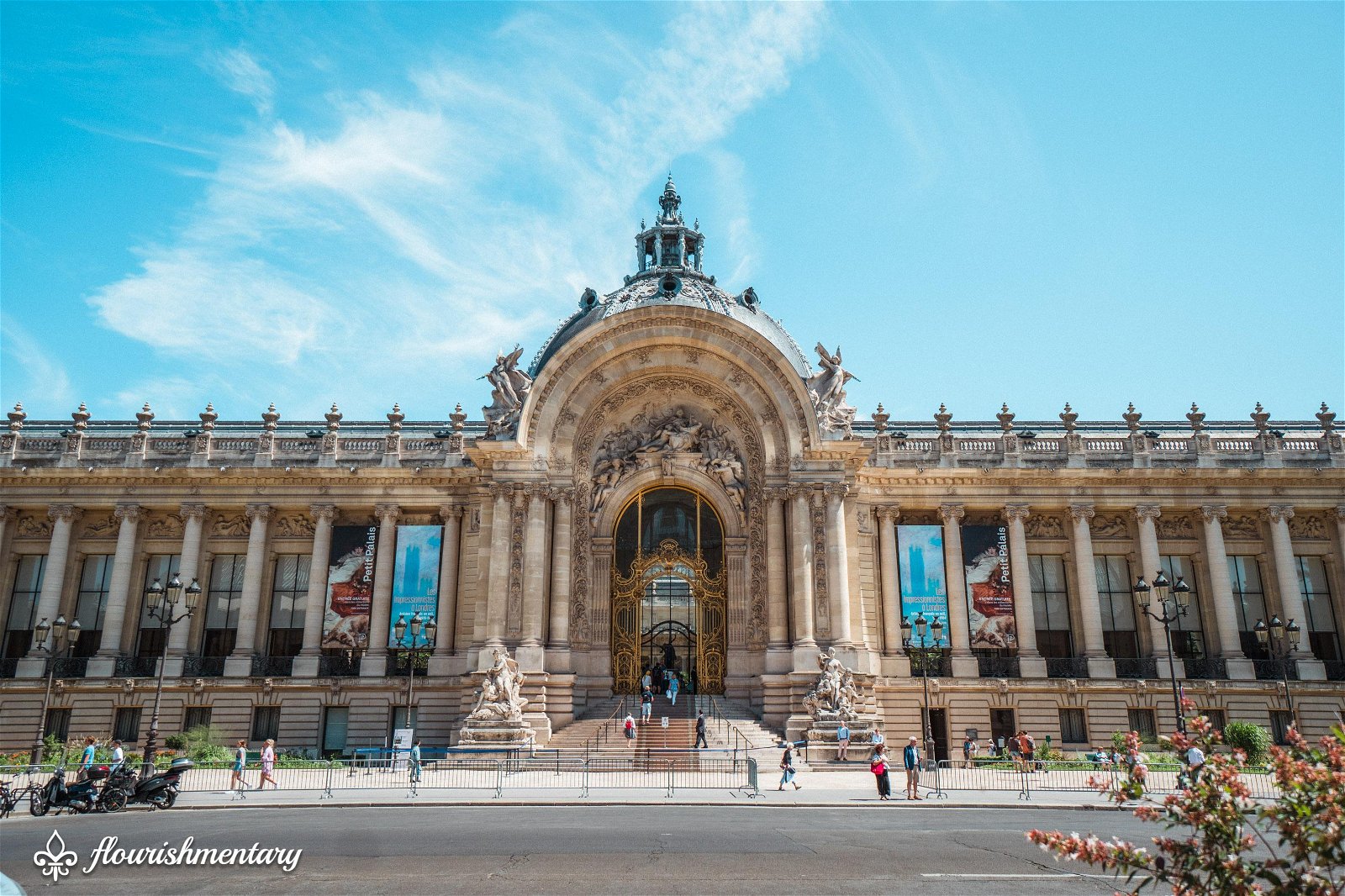
Next we made our way down the Champs-Elysées, and over to the Grand-Palais. The Grand Palais and Petit-Palais are impressive buildings that were designed by architect Charles Girault for the 1900 Universal Exhibition, meant to show off all the splendour of Paris to the world.
The Grand Palais is a masterpiece of the Art Nouveau style. It is renowned for it’s impressive ironwork, featuring a main domed roof made of steel and glass. The metal alone is said the weight about 6,000 tons, roughtly the weight of the Eiffel Tower which was built a decade before. Today it hosts major exhibitions, and in 2020 will undergo a 3 year renovation restoring it to it’s former glory.
Directly opposite the Grand Palais, you’ll find it’s mate the Petit Palais. Built at the same time as the Grand Palais by architect Charles Girault, it features architecture inspired by “La Belle Epoque”. The building is now the cities museum of fine arts, and features the most beautiful doors I have ever seen.
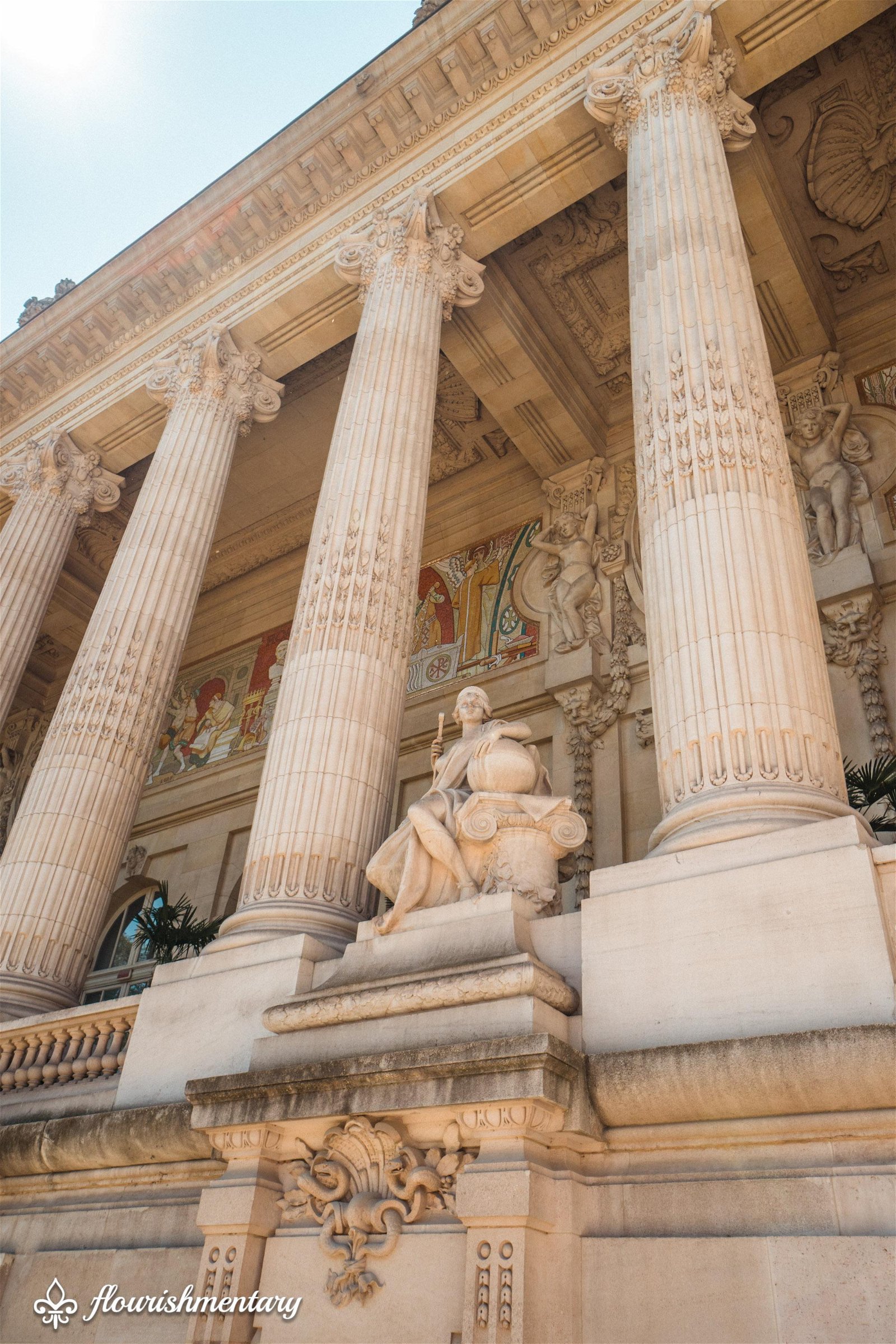
Picnic On the Champs De Mars & The Eiffel Tower

What trip to Paris would be complete without a visit to the Eiffel tower? It’ll always be one of the best things to do in Paris, because really feels like THE symbol of the city. My favorite place to take in the view is from the green fields of the Parc du Champ-de-Mars.
We had originally planned to grab a quick bite at a nearby cafe before heading there, but happened on a nearby Carrefour City grocery store. Viola, we decided the Champs de Mars would be the perfect place to make a picnic. We grabbed a baguette and supplies to make sandwiches, cous cous, and of course macrons, before grabbing a nice picnic spot.
It was the perfect way to rest, recharge, and take in an amazing view of the most famed landmark in the city.
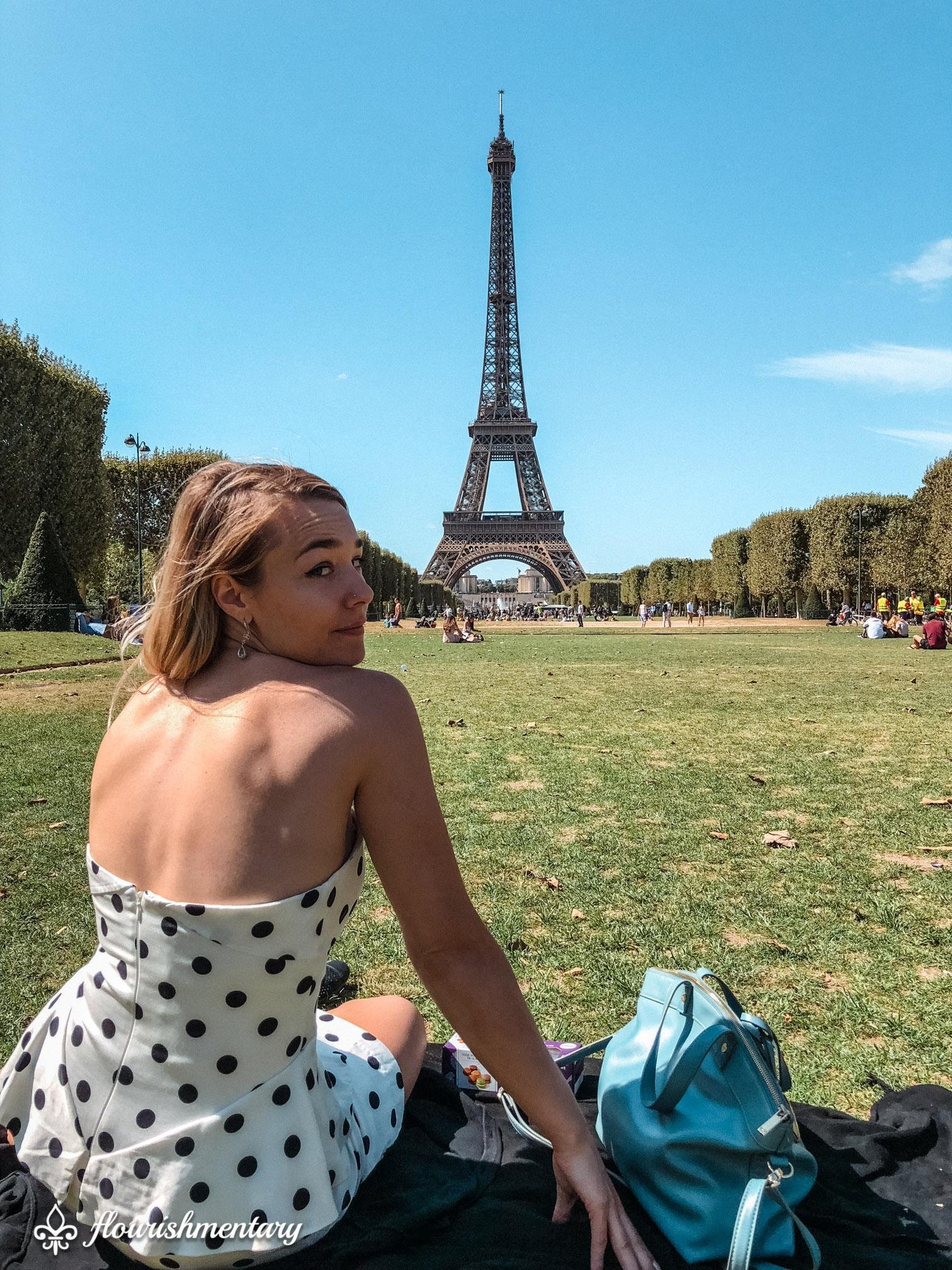
Day 4:
The Le Marais Quarter
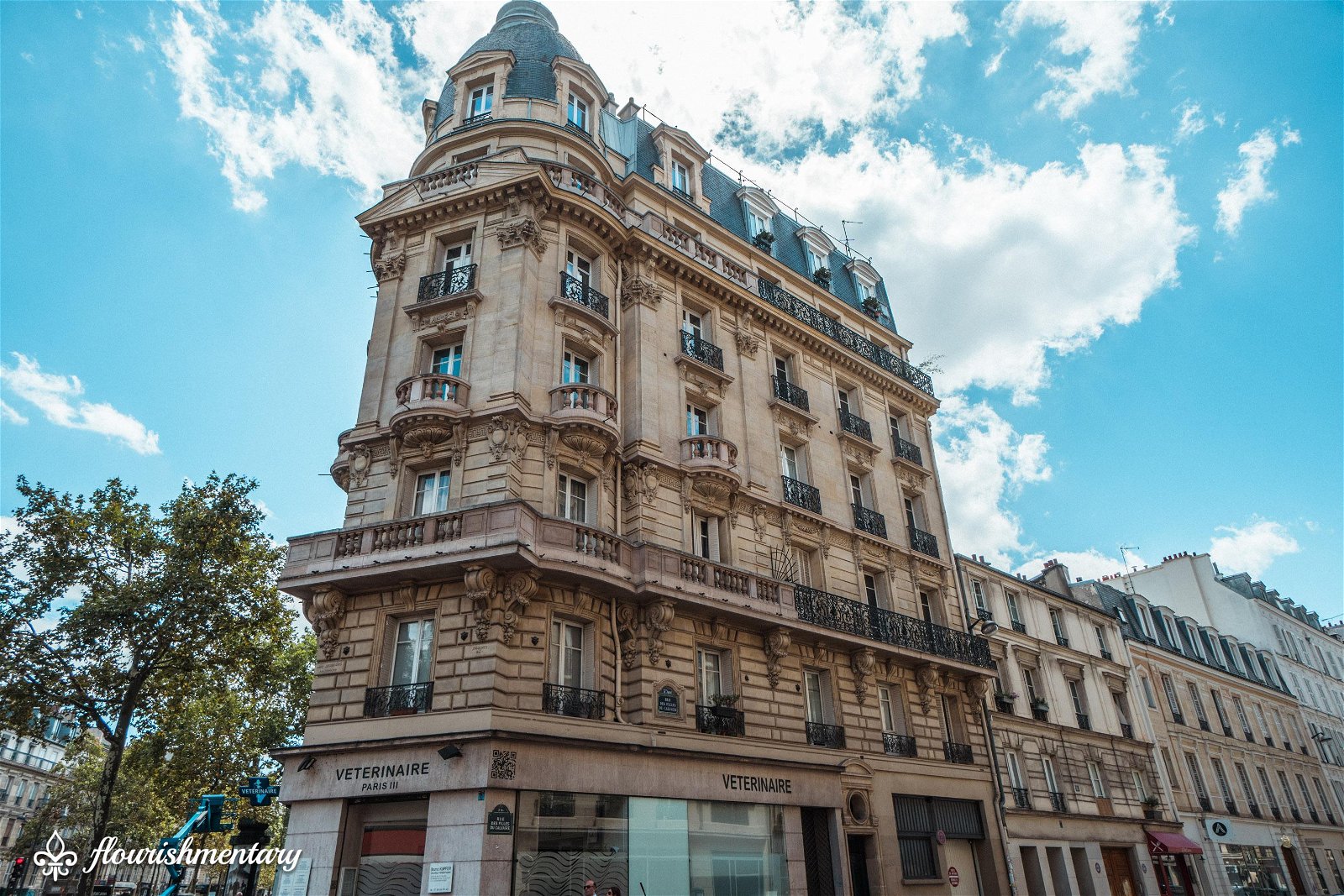
For a city as old as Paris, it’s kind of strange that one area would be called “Old Paris”, but that is the nickname for the quartier of Le Marais.
Once a marshland, Le Marais has become one of the most visited areas in French capital. This area has more pre-revolutionary buildings intact than any other area in the city. It feels like taking a step back in time, and is home to some of the most amazing facades (and colorful doors) in Paris.
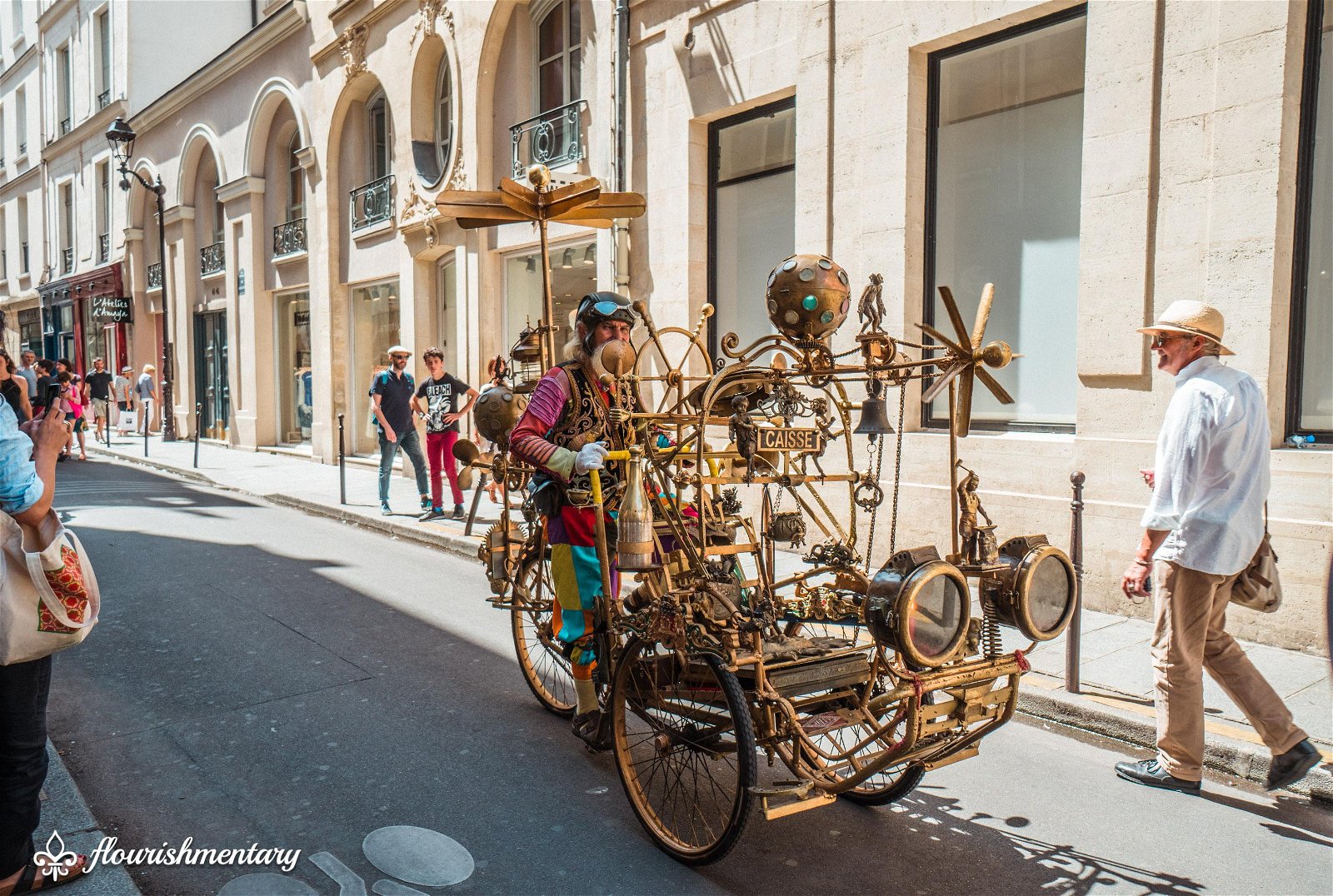
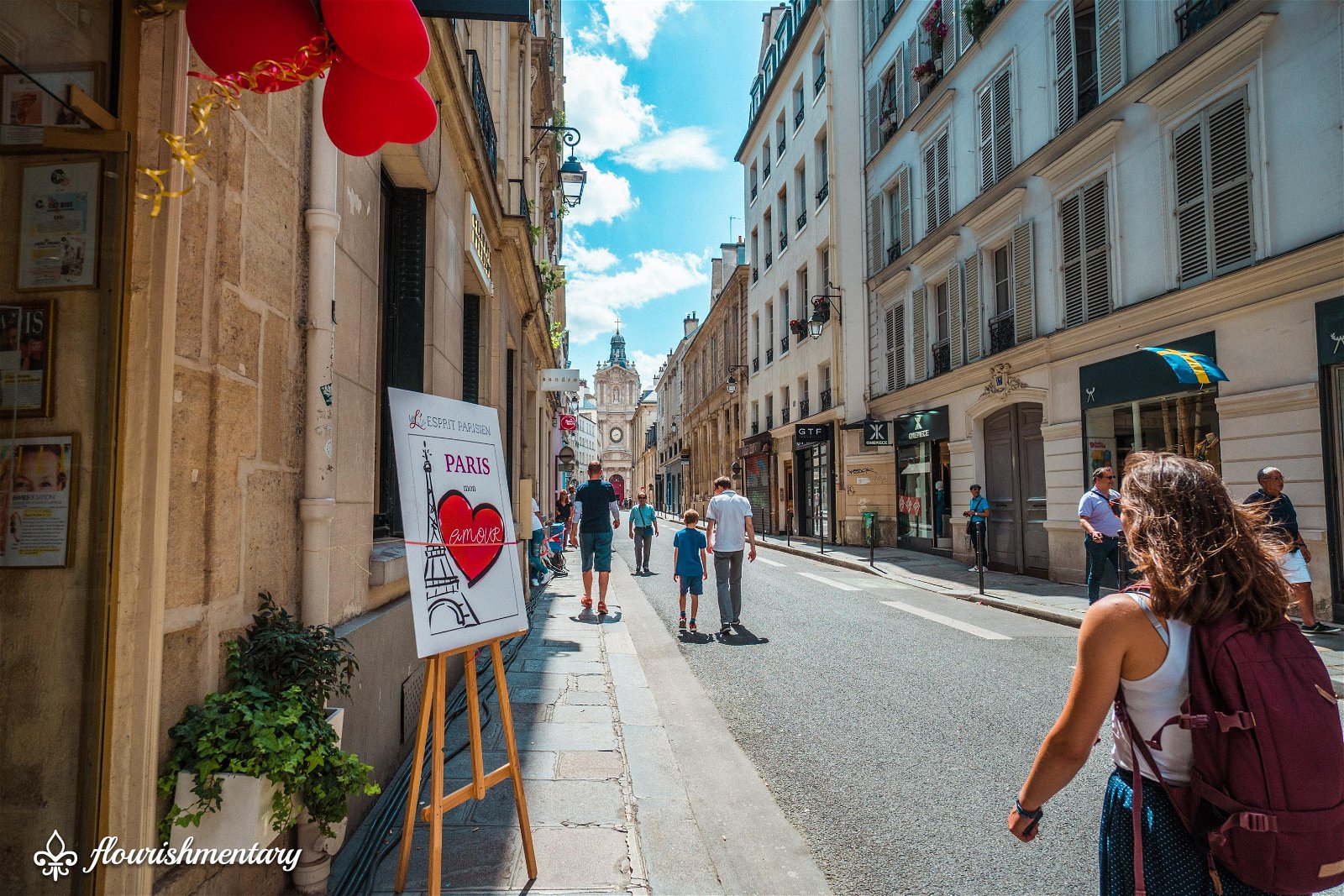
But Le Marais isn’t just loved for its architectural heritage, it also has it’s own unique vibe as a shopping district. The quarter is filled with fashionable restaurants, boutiques, and LGBTQ owned businesses.
But of course it’s chalk full of amazing 17th and 18th century private mansions called “Hôtel Particulier”. It is also home to renowned museums such as the Musée Picasso, the Maison de Victor Hugo and the Musée Carnavalet.
The Hôtel de Sully
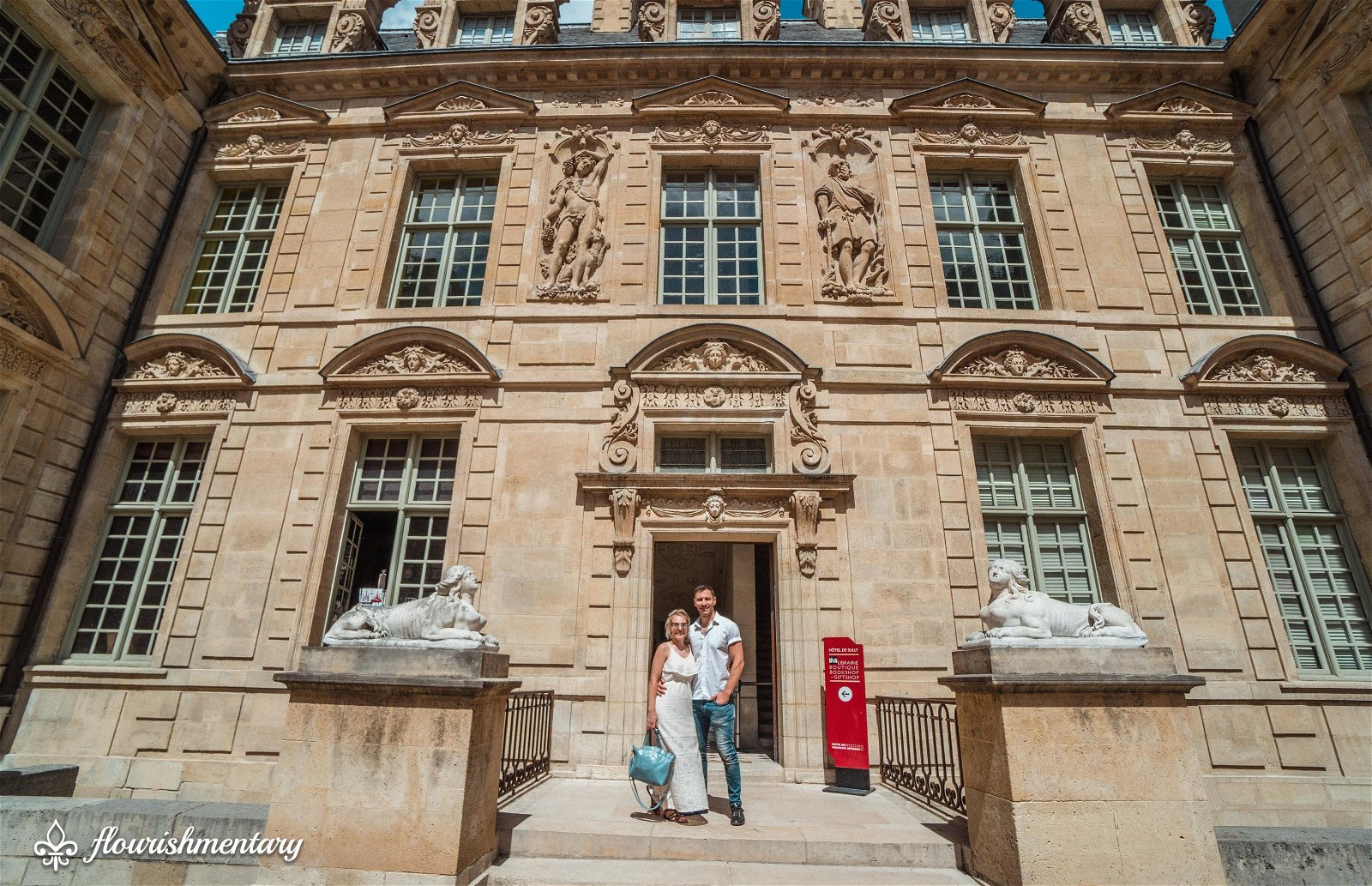
The Hôtel de Sully is a Louis XIII style Hôtel Particulier, and today is the seat of the French national organization responsible for national heritage sites. The Hôtel de Sully features lovely gardens which give access to the former Place Royale – today the Place des Vosges.
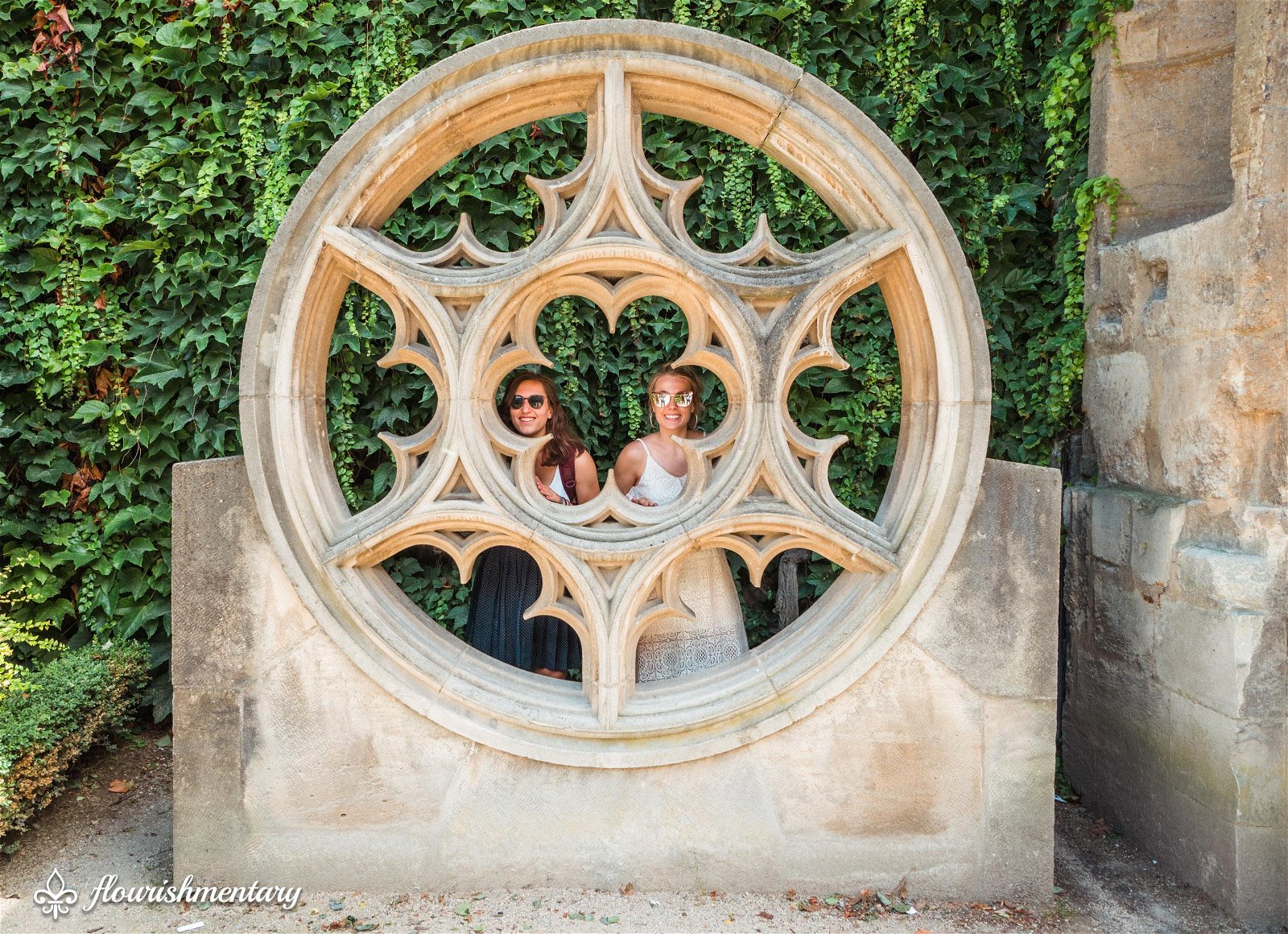
Place des Vosges
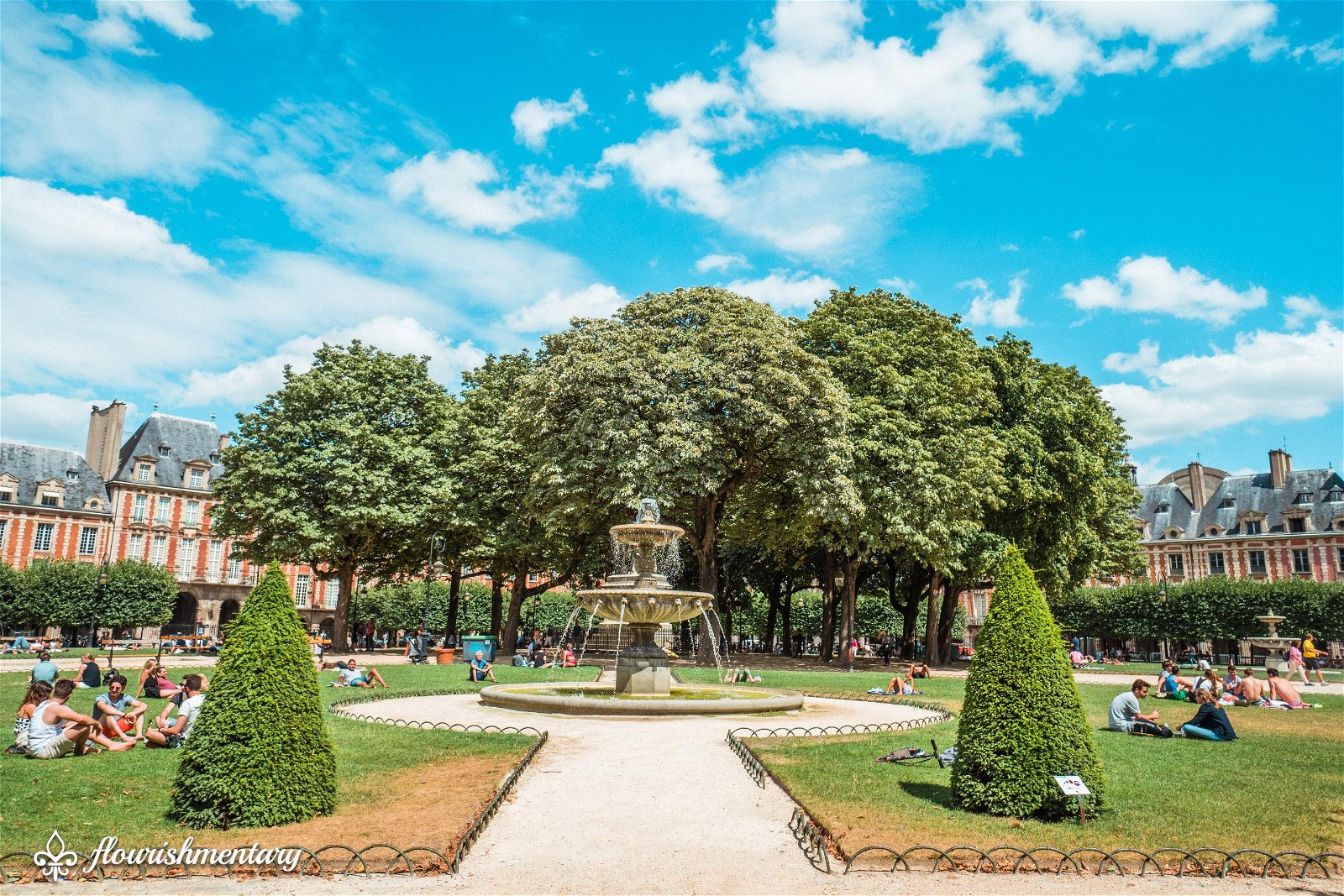
Outside the former Royal palace, is the oldest planned square in Paris; Place des Vosges. During the 17th and 18th centuries it was a very expensive and affluent area, and one of the reasons that the area attracted inhabitants of Parisian nobility. Today the beautiful park features statues, fountains, and always groups of friends enjoying sun on the lawn. Just the way Paris should be seen!
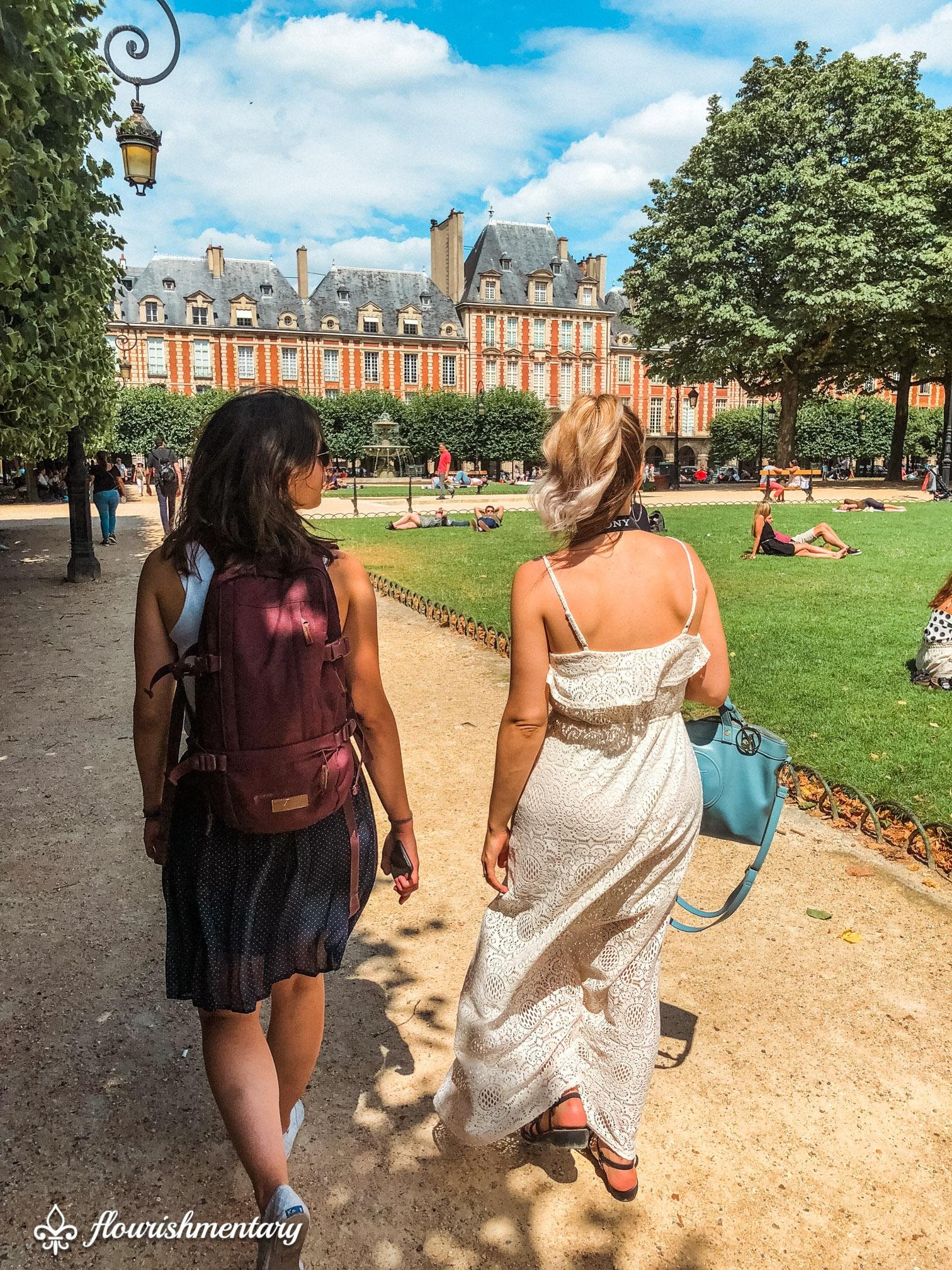
5 Tips For Planning Things To Do In Paris
1. Where to stay: Staying relatively central, and close to multiple metro lines is the best way to enjoy Paris. We stayed in the République neighborhood (thanks to my friend who loaned us her adorable flat) and enjoyed the area. It has fabulous metro coverage, yet is central enough get around easily, and safe. There are some great Airbnb’s in the area, and you can enjoy $40 off your booking with this promotional link.
2. How to get around: We found that buying a weekly pass will get you access to bus + metro, and is less expensive than a 5 day pass, or daily pass. Keep in mind which metro zones you’ll use, as they sell passes that include some or all of the zones of Paris. We also used Uber to the train station when we didn’t want to haul luggage, and it was a valuable time saver on our trip.
3. What to wear: Layers are your best friend! Even in the summer, the temperature can change drastically from morning to night. Consider carrying a plain scarf to cover your shoulders for cooler temps (and a must for visiting places of worship). Be sure to wear a pair of comfortable shoes for long days on your feet.
4. Keeping an eye out: No need to be fearful during your visit, but it’s always wise to keep a firm grip on your phone, and belongings, especially when entering and exiting metro stops. Tourists are prime targets for pick pockets, so don’t put valuables in your back pockets, and keep alert in crowded areas. Better to be safe than sorry!
5. Try speaking a little french: While it seems 99% of Parisians (I exaggerate) speak english, it’s always polite to ask first before you begin speaking to someone. Beginning your interaction with an “Excusez-moi, parlez-vous anglais?”(Excuse me, do you speak english?) is all you need to get started. Using “S’il vous plaît” (Please), and “Merci” (Thank you) go along way, even if the person can converse in your native tongue. Who knows you may even like the way you sound with a french accent. Oh la la!
Thanks for reading this round up of fun and relaxing things to do in Paris! And if you’re looking for more fun things to do in France, check out my guide: Paris for Design Lovers.
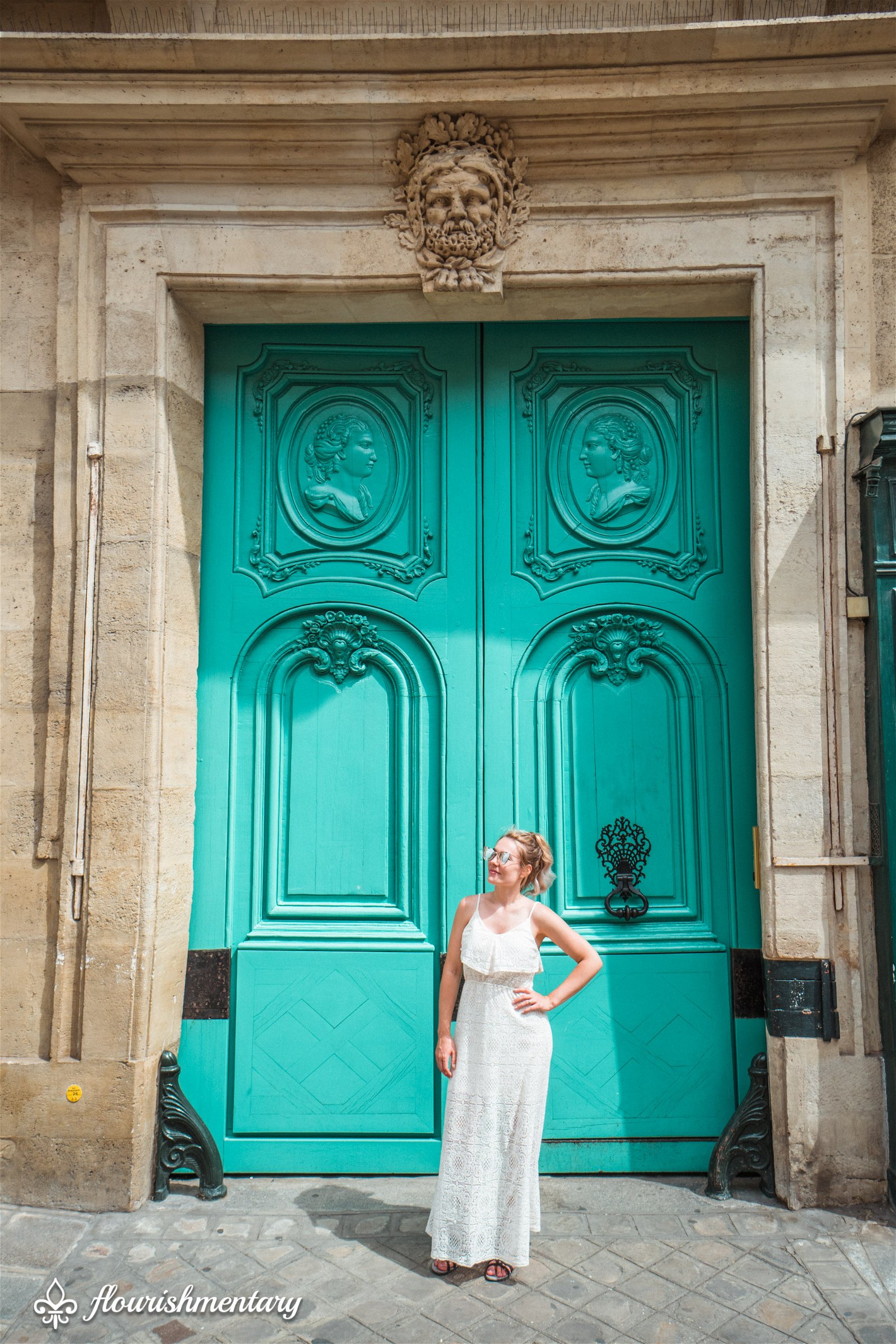

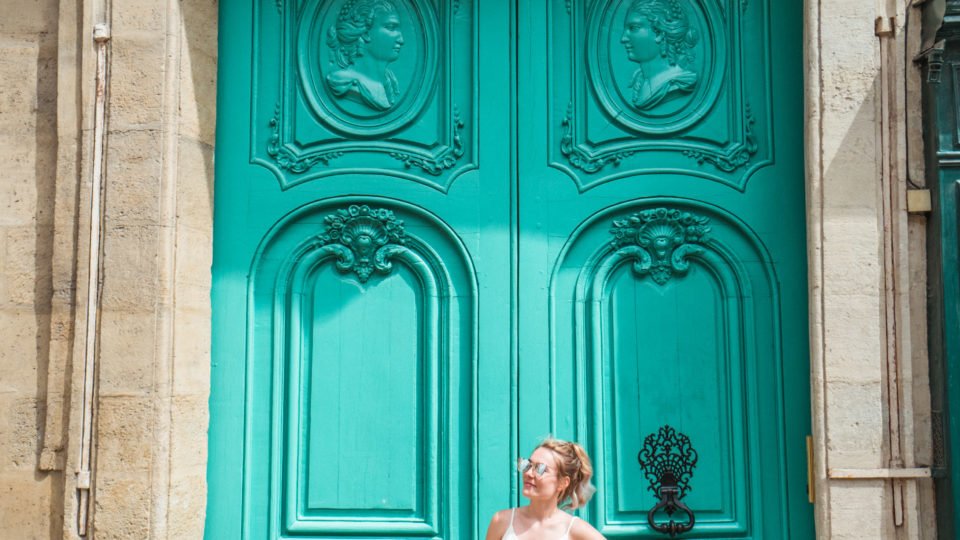
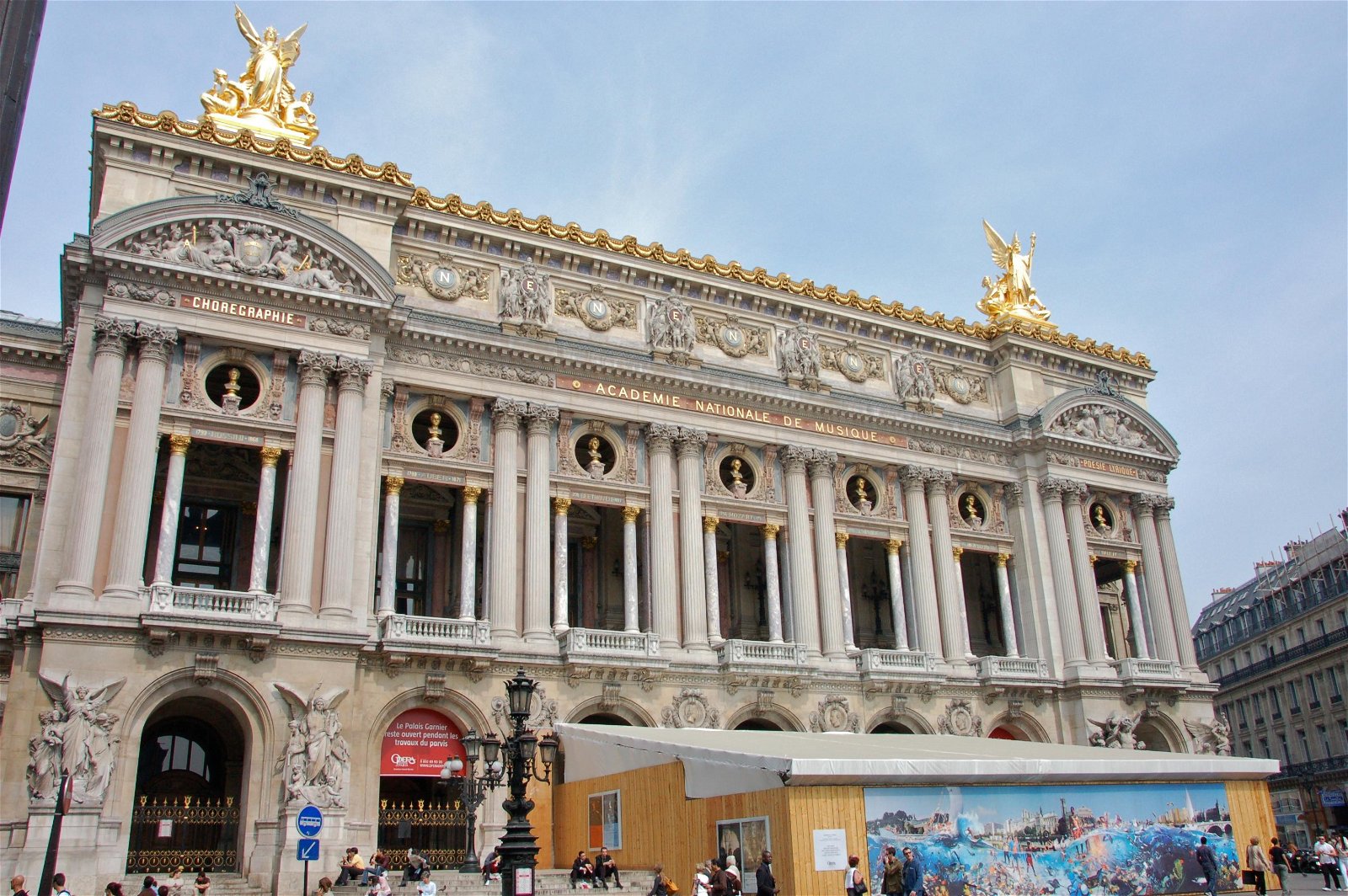
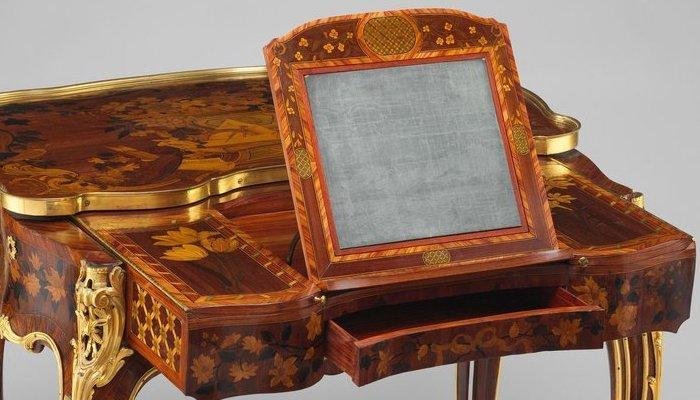
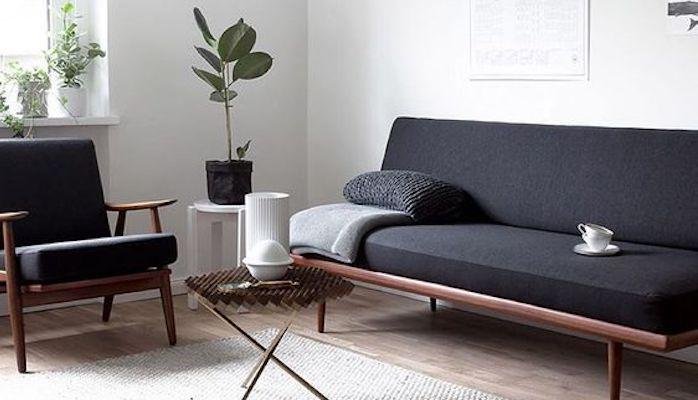
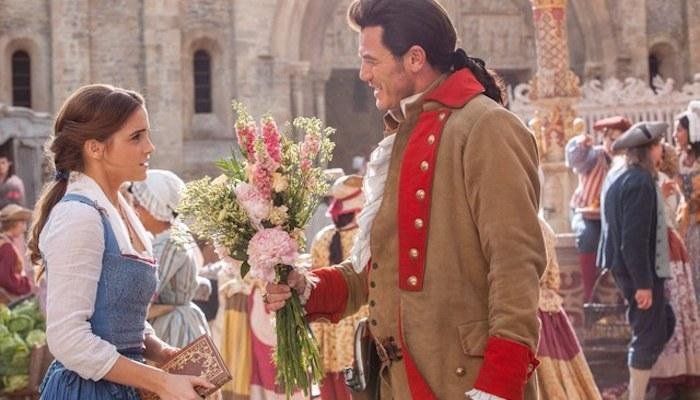
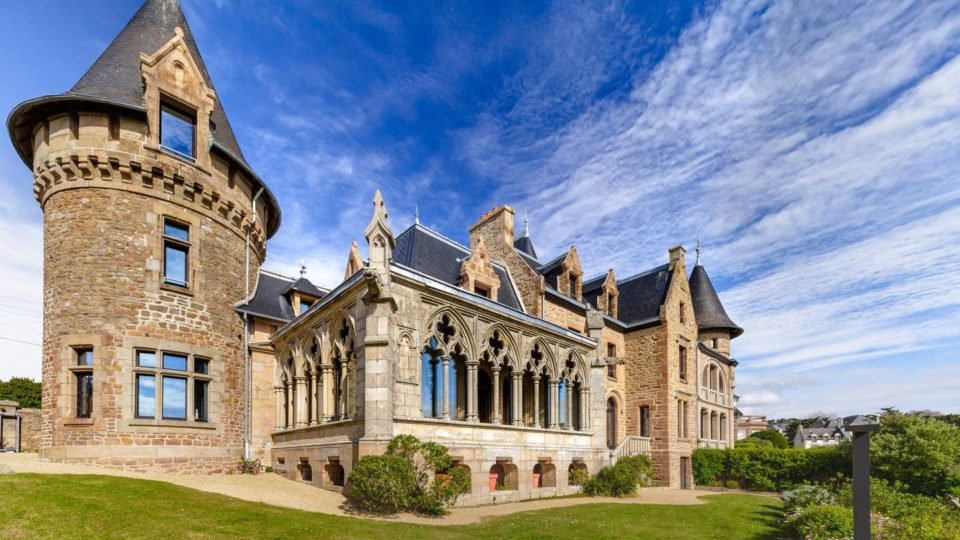
Share Your Thoughts